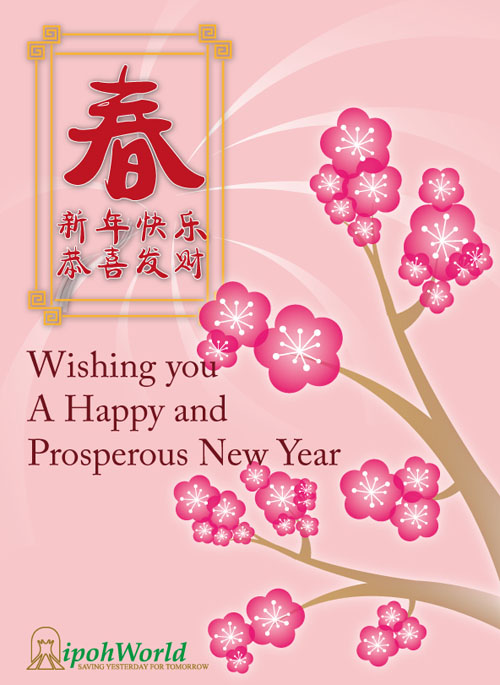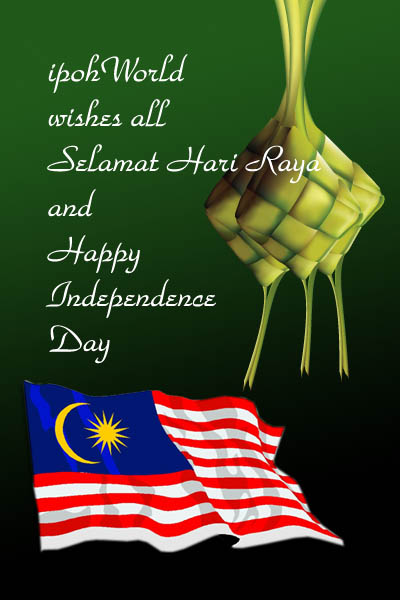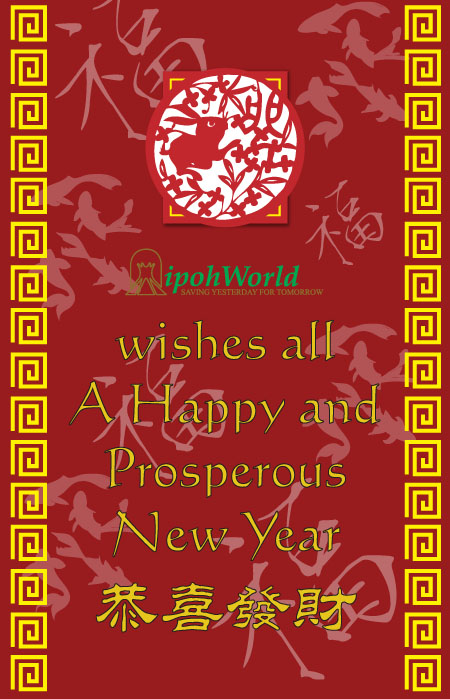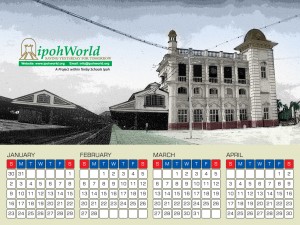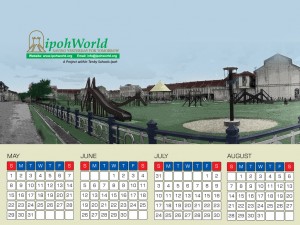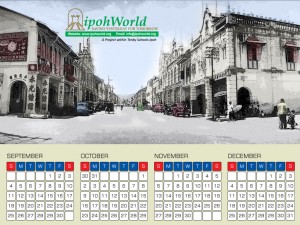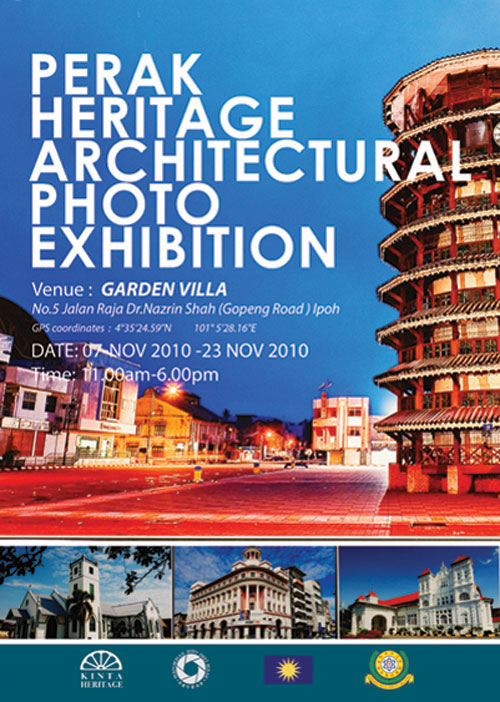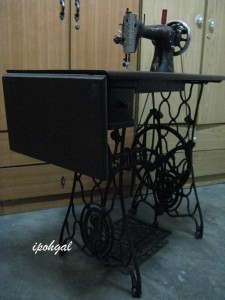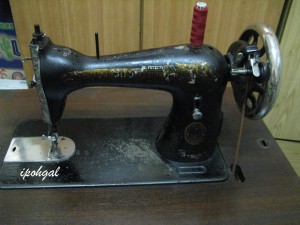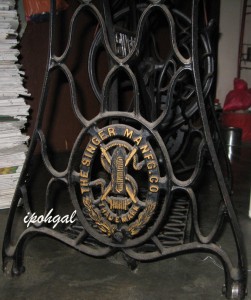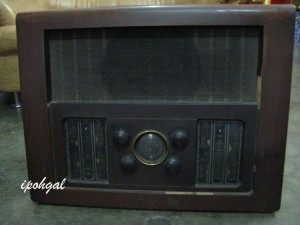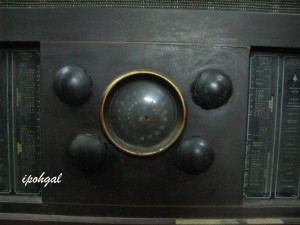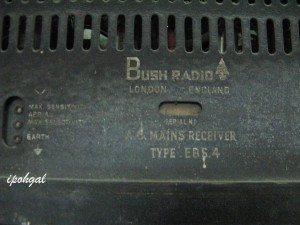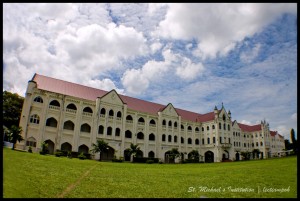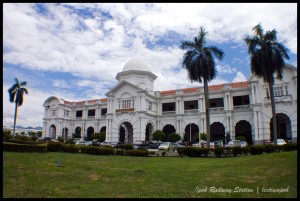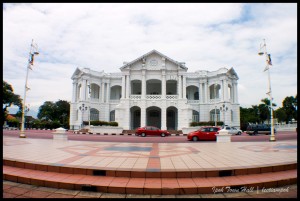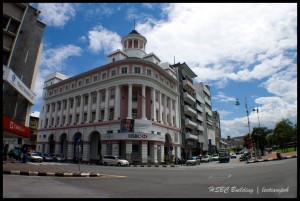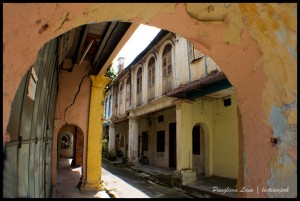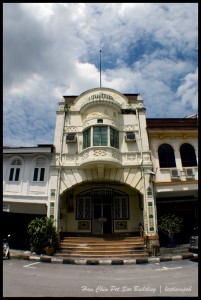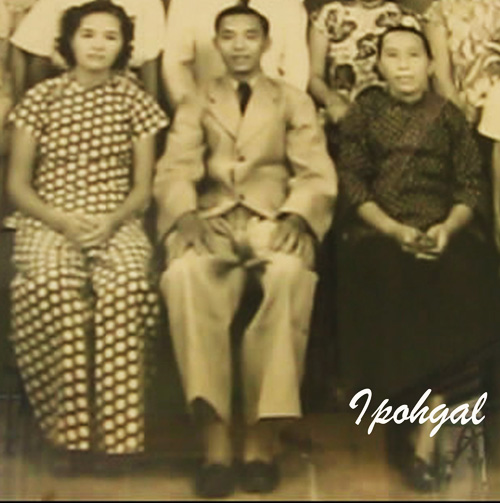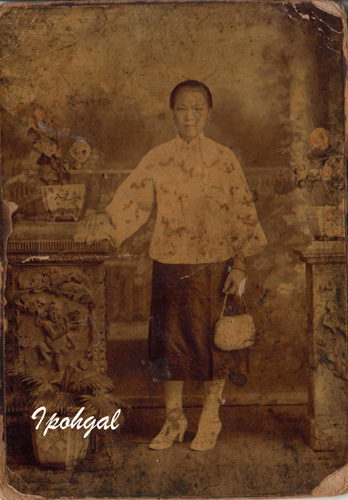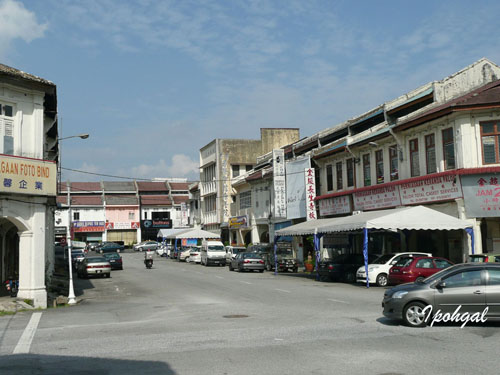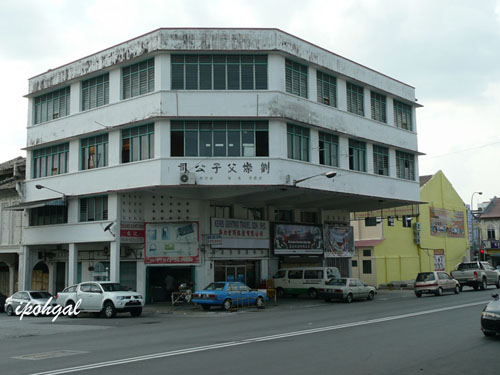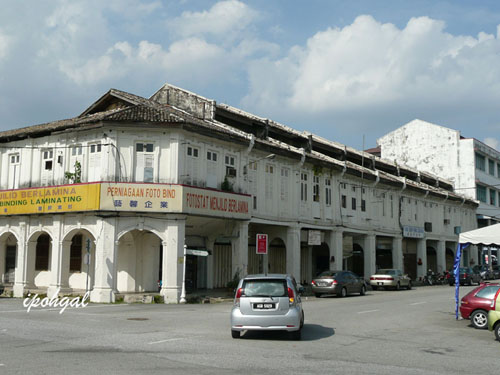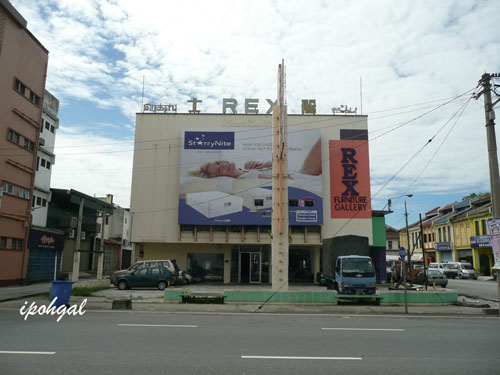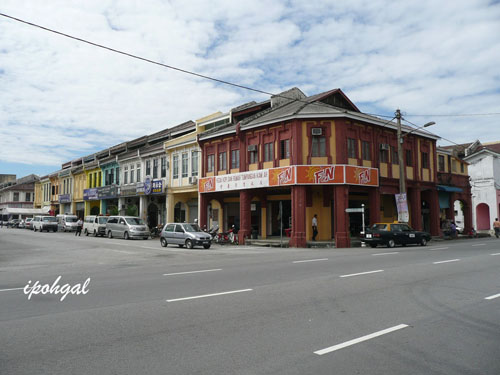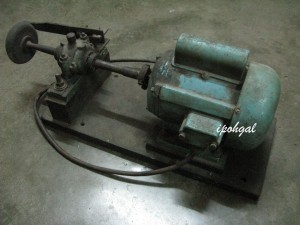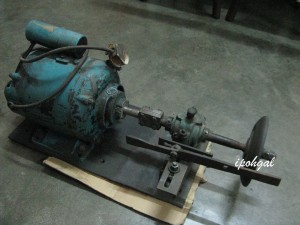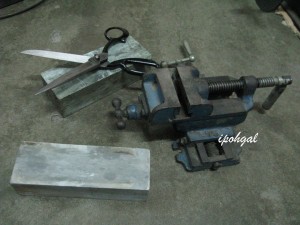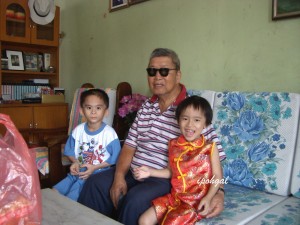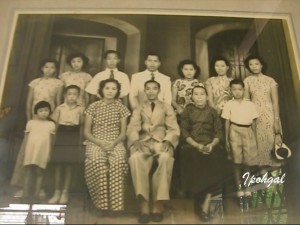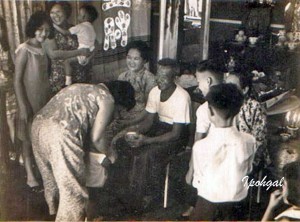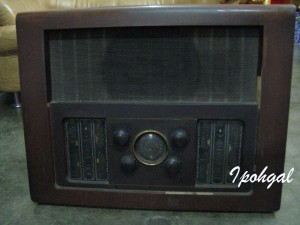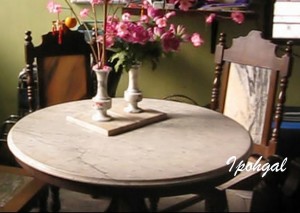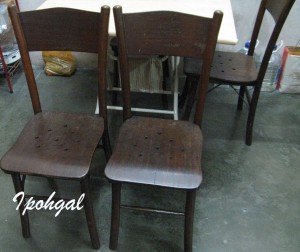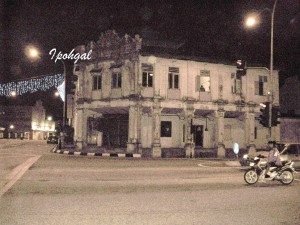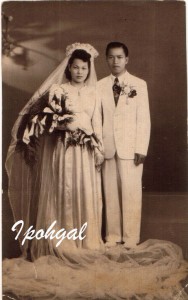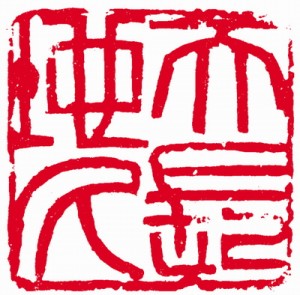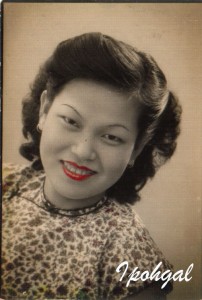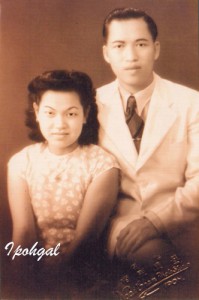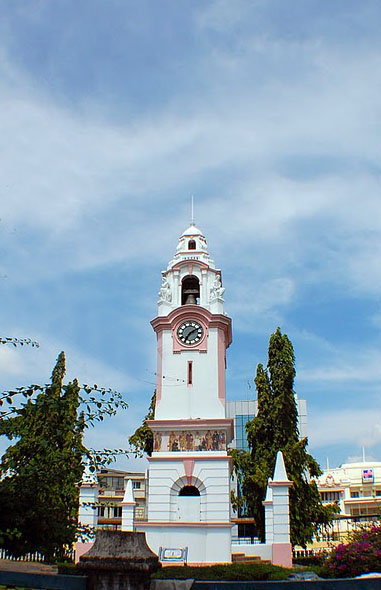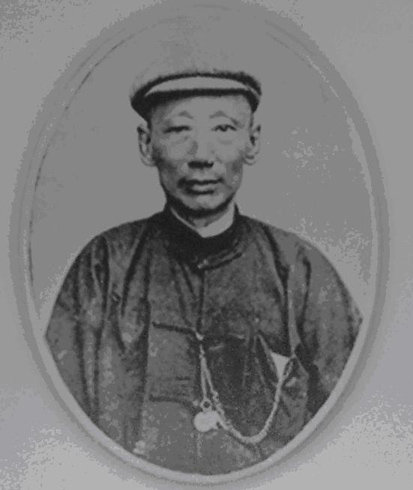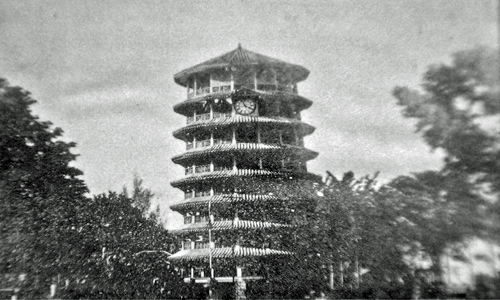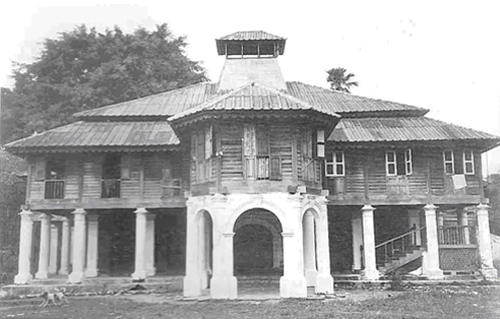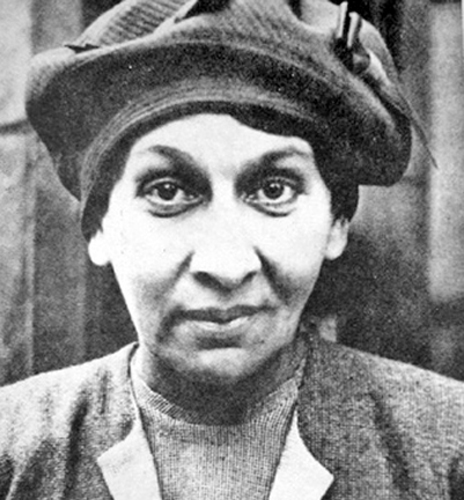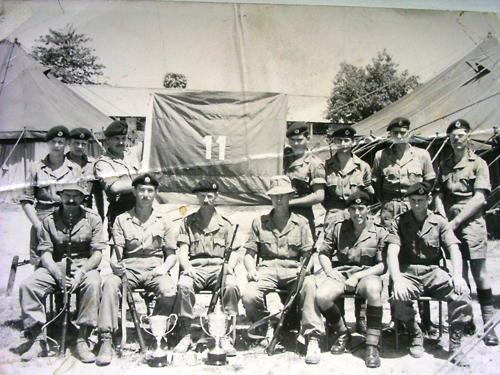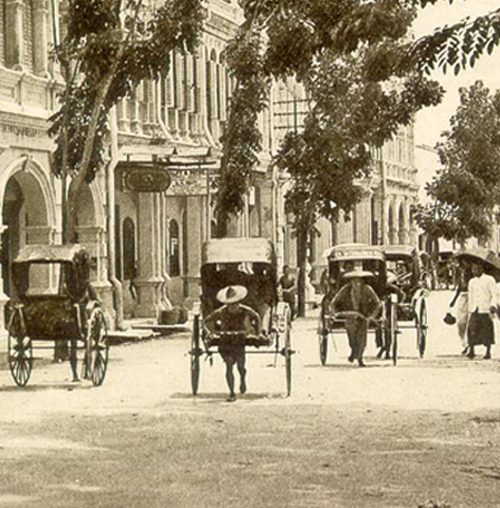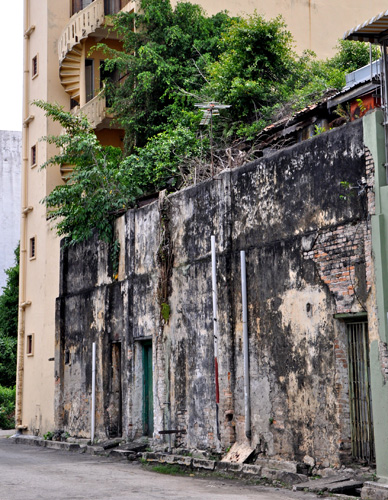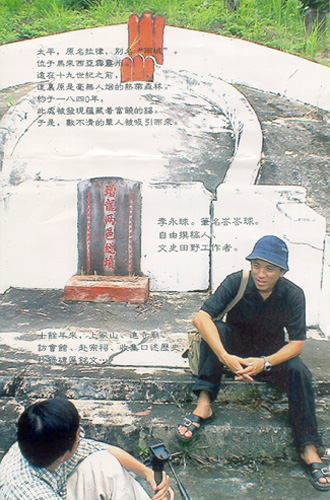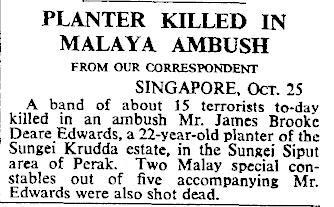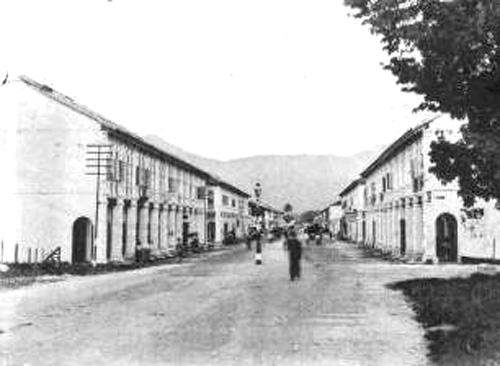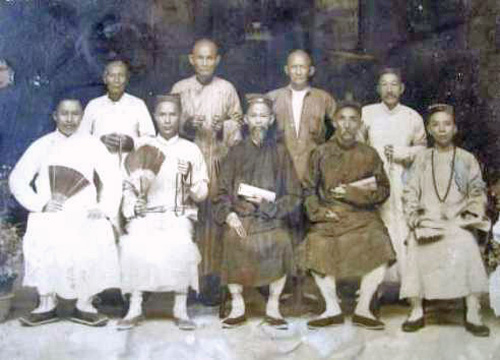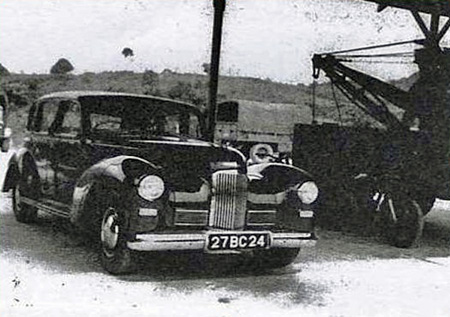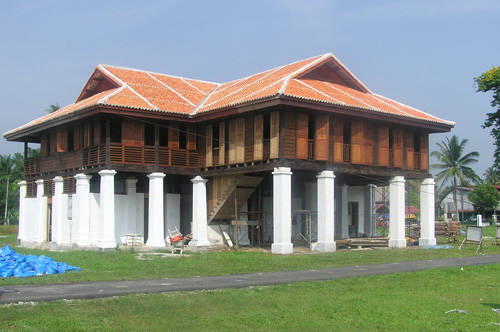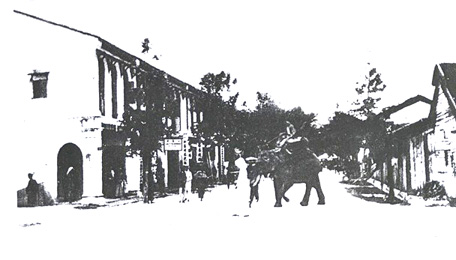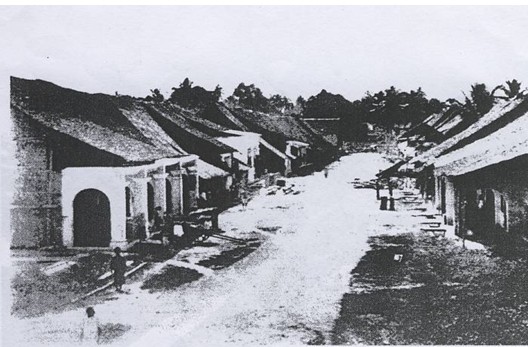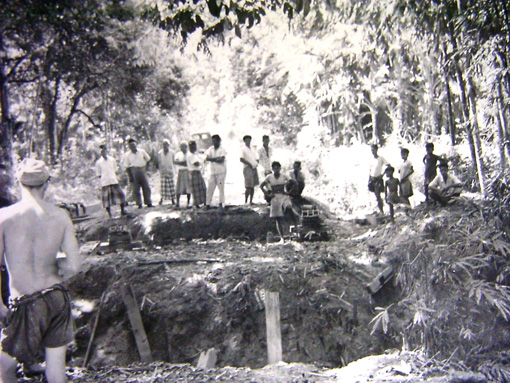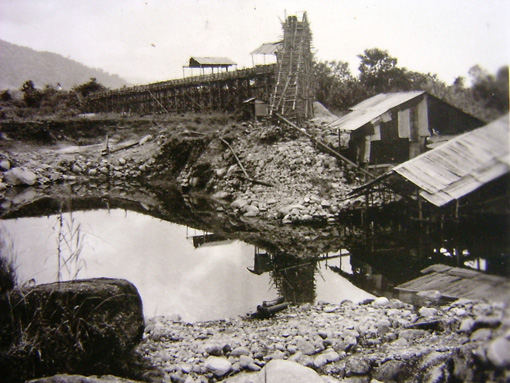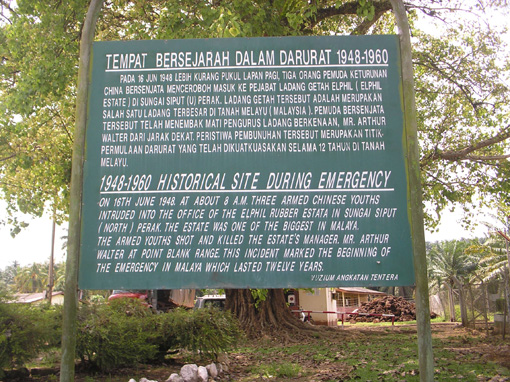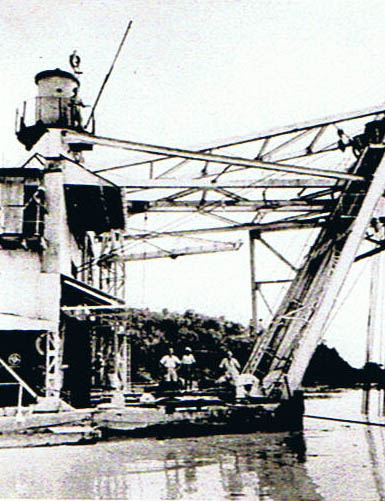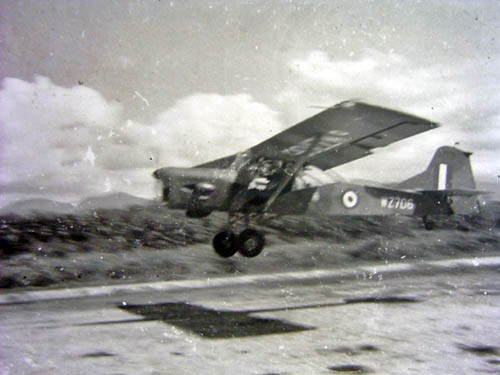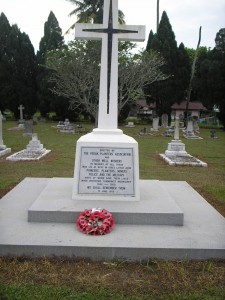February 2013
December 2012
January 2012
December 2011
October 2011
August 2011
February 2011
December 2010
October 2010
Perak Heritage Architectural Photo Exhibition
Now here is your chance to enjoy Ipoh’s heritage buildings all in one place at the Garden Villa, No 5 Gopeng Road. Here you will see some really great photos of our famous buildings in this heritage architectural photo exhibition. Come and see buildings as others see them, you may be surprised with what you find.
The exhibition opens on 7 November and runs until 23 November 2010
from 11.00am to 6.00 pm daily.
Do come along and while you are there, cast your mind back to the days when Eu Tong Sen would take refuge in the Villa away from the bustle and noise of Eu Chateau. Alternatively picture it in your mind as occupied by the Japanese or as it was later a kindergarten full of local boys and girls enjoying their pre-school fun. We look forward to seeing you there. You’ll enjoy it!
August 2010
My grandma’s classic collections……祖母的古懂收藏
My grandma Yim Mun had a penchant for classical things. This was due to a privileged upbringing in her childhood home. As the daughter of a wealthy and respectable man, she had an eye for high quality and lasting items. She always went for good brands.
This was a vintage Singer treadle sewing machine which grandma bought in 1928. She paid RM130 for it, quite a princely sum back in those days.
Based on its serial number Y 3254573, I managed to trace its origin. It was manufactured in Clydebank, Scotland in the year 1925. That makes it almost 85 years old.
Grandma used it to do some light patchwork. Many years later, she gave it to her daughter who was a tailor. After many years of heavy usage, it could no longer function so smoothly.
My aunt simply abandoned it and bought a new electronic machine. It was left to gather dust and stand idle at a corner for many decades. However, being a possessive woman, she does not allow anyone else to touch her mom’s property.
It was not until 1973 after my grandma’s death that my dad decided to overhaul it and bring it back to life. He felt it was a waste to leave it idling around.
First, he traced the details of the machine into a piece of blank paper and marked them accordingly. Next, he took out part by part and sorted them into different categories. Since they were very rusty due to years of neglect, Dad soaked each part in kerosene for some time to remove the rust. Then he painstakingly polished them until they were shiny again. Every nuts and screws were given a touch up.
It was truly a labor of love. He wanted to give it to Mom who really needed the machine to sew some clothes for us.
Every night, after he had finished sharpening scissors, he would labor on this machine. It took him almost two months before he could restore it back into its original glory. Once it was finished, it was as good as new! Today, it could still function so well.
Mom was so thrilled to finally have a sewing machine and we could have some clothes to wear instead of old hand me downs. Especially for me, because as the youngest child, I always got fifth hand clothes!
Beside this sewing machine, grandma also bought a vintage Bush Radio which was manufactured in London around 1940s. This radio was bought in 1945 after my dad opened Nam Foong Coffee Shop at 188 Hugh Low Street. It was actually sold to her by a regular customer.
This customer was a hardcore gambler and he lost heavily at the Race Course. Desperate for some quick money, he took his family’s radio and made an offer to my grandma who could not resist this gem. She wanted to buy it so that the patrons of the coffee shop could have some entertainment. It was a good decision.
While enjoying the smooth and aromatic tau foo fah, the customers were serenaded by music and songs from all over the world. During its prime, we can actually tune in to stations from the USA, Europe, Africa and most parts of Asia. It was on from morning till night. It served us until mid 70s, a total of almost 30 years. Due to heavy usage, it eventually broke down.
I found out that it can still be repair but it has to be done in London where the manufacturer has a department to repair and restore its vintage radios. And they also have a website for buying and selling such vintage gems.
There were many other valuable items which my grandma bought throughout the years. Among them was a big grandfather clock, a vintage typewriter, a gramophone, a charcoal iron and some porcelain wares. My family had sold them off to antique collectors to raise fund to treat my youngest uncle in China. He eventually died from a tumor in his neck at a very young age. Today, only these two items were left to remember my grandma.
July 2010
On a slow boat to Malaya but not for its tin! 飘到他乡去找新生活
China, in the late 19th and early 20th century, was stifled with social upheavals. The Qing Dynasty 清朝时代 was on the verge of collapse. Many rebellions were mounted but were ruthlessly suppressed and brutally put down. It was very dangerous to live in that country during such a turbulent period.
Guangdong广东, a southern province, was a hotbed of anarchy. The people living there used to say “Mountains were high and the emperor was far away山高皇帝远.” Therefore, many young men in that province do not hesitate to rise up and revolt. They just wanted a more peaceful life for themselves and their families.
Against such a volatile backdrop, my paternal grandpa, Yip Kwee Kee叶巨基, was born, circa 1890 in Nam Hoi 南海district in Guangdong. Although diminutive in size, a man of few words and illiterate, like many of his contemporaries, he was drawn to the idea of a Republic.
He was a very skillful bean curd maker and very proud of his trade. Business was good and every cent he earned was donated to this cause. He was a very generous man.
The government arrested many of its opponents and their sponsors. They were executed publicly as a deterrent to others.
He learnt, to his horror, that his name was blacklisted by the government. So, to save his head from being chopped off, literally speaking, he decided to run away to Malaya 马来亚or Nanyang南洋 as it was called then. He also changed his name to Yip Soo 叶苏to avoid being hunted down as he knew the government was hot on his heels.
But something unexpected happened. The village headmaster, who was also a staunch supporter of the same cause and a well to do man, came with his only child, a young girl called Yim Mun严曼, to see him as he was packing to leave.
“I’m too old to run away but please take my daughter with you to Nanyang. You can have her as a wife since I knew you are a hard working man” he told Yip Soo.
Of course Yip Soo felt humbled by this sudden offer and could not turn down the respectable headmaster and the young girl standing in front of him. He gladly accepted this “gift” and promised to take her along to the new land. That was how an illiterate bean curd maker suddenly got himself a wife. A wife that was dropped from the sky, my Dad joked to me.
After a tearful farewell, they boarded a steamer and set sail to a far away foreign land, determined to start life anew.
Grandpa has heard about the tin mines in Perak. Back in his village, many young and able bodied men went to various places such as Gopeng, Kampar, Batu Gajah or Tanjung Tualang to work in the tin mines as coolies. Most of them went to escape poverty but later got themselves even poorer and indebted to some “middle men” or “agents” who had arranged for them to go there. Many spend years to redeem their freedom. This wave of illegal human trafficking was called “Mai Chu Chai卖猪仔 (人口贩卖).”
No, Yip Soo did not intend to work as a mine coolie. He only wanted to sell his bean curds to them. He knew there was a ready market for his products. So, together with his new bride and a few of his brothers who also followed along, they settled down in Gopeng on arrival, circa 1915. They rented a little wooden hut and started making bean curds to sell for a living.
Grandpa and his brothers quickly cut their long braids and threw them away. You could not be able to do that in China. A long braid is a symbol of subordination to the Qing Dynasty and any man found not having one will have his head chopped off at once!
Later, his brothers branched out and started their own families. Not long after this, grandma gave birth to my dad and his two sisters. They made Gopeng their home.
His business grew and he began to prosper. Having a little extra cash in hand, he began to indulge in gambling, his favorite pastime. He could always spend long hours gambling while his wife and children were left at home waiting for his return.
Grandpa always brings home meats and vegetables from the market after he had finished selling the bean curds there. On the way home, he would often dropped by the gambling dens and once he was engrossed with his games, he would totally forgot about the food which became stale at the end of the day when he finally goes home. Many quarrels broke out between him and grandma because of his callousness.
Once, he was caught in an illegal gambling den and together with the rest of the gamblers was taken to the police station. There, they were made to parade around the town with hands cuffed and placards hanging from their necks with the word “Illegal Gambler非法赌徒”. They were booed and jeered at by the locals. To shame you publicly was the way the British authorities punished illegal gamblers.
Grandpa soon earned the nickname “Tofu Soo 豆腐苏” among the miners who were mainly Hakkas 客家人. They simply loved his smooth bean curds which were cheap, nutritious and delicious. He soon became a popular figure in the market and the gambling dens!
Many years later, he decided to have another wife to help out in his growing business. You will need as many pair of hands as possible in this trade. It was almost impossible to do things alone. What with the grinding, cooking and also chopping fire woods!
Unlike her husband who could neither read nor write, not even his own name, grandma was an educated woman. She grew up reading classical literatures and doing embroideries. As a “siew cheh 小姐” or “rich missy”, she was used to being waited upon by maids in her childhood home.
As a “siew cheh” worth her salt, she hardly touches any house work, let alone roll up her sleeves and helps in chopping fire woods! That would be a tall order. Anyway, Grandpa did not expect her to do anything other than sitting down and minding the children. All hard work was beyond her. To him, she was just a “gift” from a rich man.
You can’t really fault her. You see, she has a pair of bound feet. Even though her feet was “released” after just a few years and they eventually grew back, but they were already deformed and she has difficulties walking. It took her many years to learn to walk properly again and it was excruciatingly painful for her to do so.
In those days, you do not have Indonesian maids or helpers. Driven by sheer necessity, she sat down and wrote a letter to her relatives in Guangdong asking them to look out for another wife for grandpa. The candidate must be someone hardworking, willing to slog without a whimper and preferably from a poor family. In a short time, one was found and put on the boat bound for Malaya.
Her name was Ng Mooi吴妹. She was accompanied on the long journey by her male relative. But it turned out to be a nightmare for her. She was sexually violated by him on the boat the entire journey. Once she reached Gopeng, he quickly took the return trip on the same boat back to Guangdong.
When Grandpa found out, he was very furious indeed. There was nothing he could do but to accept her. However, he was unsympathetic to her ordeal and instead gave her the cold treatment. Before long, she began to fall into a deep depression and shut herself in a room all day.
One day, Grandpa was out at the market and Grandma was asleep with the children. Poor Ng Mooi put together a heap of dried coconut shells which were use for cooking and started a fire. Soon the whole house was burnt down. Luckily nobody was killed.
When Grandpa got home and saw the flatten house, he blew his top. It was a rented house, not his own. In a fit of anger, he took her to Tanjung Rambutan and had her committed into the mental hospital. At that time it was ran by the British administration.
Fault was, Grandpa did not visit her at all. A few years later, the hospital sent Grandpa a letter written in English, but Grandma could not read it. So the letter was just put aside and Ng Mooi was forgotten.
By then, Grandpa insisted for another wife and this time he personally went to Guangdong to fetch her here. It was around this time that the family moved from Gopeng to Batu Gajah. There, Grandpa bought a plot of land to build his own house, ready to welcome the new bride, Chan Kwan陈裙, who later bore him another seven children.
At last, with ten children and a hardworking third wife, Grandpa Yip Soo finally got all the help he needed in his bean curd business!
And Grandma Yim Mun can sit down comfortably again!
Note: Yip Soo was seated in the middle. On the right was Yim Mun and on the left was Chan Kwan. There was no photo of Ng Mooi because she was send off to Tanjung Rambutan by grandpa shortly after arriving in Gopeng.
The weaver girl from Shun Tuck.她来自顺德.
Chan Tai 陈黛, the charming girl in this photo, used to live in a small village in the district of Shun Tuck 顺德 in the province of Guangdong, China in the 1920s. This district was renowned for producing silk. Her family owned a small silk worm farm. She helped them to cultivate silk worms and weave the silk thread into cloth.
One day, a professional matchmaker called “mui yan poh 红线人” approached the family with a marriage proposal. A guy in Ipoh, Perak, Malaya, needed a wife and was looking for a girl from a decent family.
In those days, many families in small villages in China dreamed of having their daughters marrying off to faraway lands and lead a better life. At that time, Perak was famous for tin and it was very fashionable to come to this land of plenty.
The prospective groom was a guy called Chow Yee Phooi 周毅錇, from the district of Phun Yee番禺. He has already migrated to Malaya together with his brothers many years before. He was the youngest among the brothers and the only one still single and eligible.
They opened a shop selling fruits in Ipoh. This shop, called Chow Hang Kee 周亨记 , distributed fruits to other fruit sellers in the market nearby. The shop was located between Yik Foong Complex and Lam Looking Bazaar, facing the back portion of the present Pasar Besar Ipoh.
Life was good to him. Flamboyant and carefree, he always frequented gambling dens in his spare time. He was particularly fond of mahjong and “pai kao”, a game of black tiles.
In the past, a girl has no say in her marriage. Everything was decided by her parents. The Chinese called it “Mang Fun Nga Kar 盲婚哑嫁” meaning a “blind and mute marriage”. She has neither meet the groom nor can she voice out her opinion about the match. As a daughter, she just has to follow everything planned for her.
Her parents gave their approval at once and a simple wedding ceremony was conducted in her village, minus the groom. In his place, a cockerel was used in the ceremony although I don’t know why they chose this animal to represent the groom!
After the wedding ceremony, she left her village and boarded a steamer, stopping at Singapore first and then later, Malaya. Next, it was to Ipoh.
Upon her arrival, this photo was taken. The purpose of taking this photo was to send it back to her family in China to show them that she has arrived safely to her new home. There were only two such photos. One she sent back to her family and the other appeared in this blog, which she kept as a keepsake. Later, it was handed down to my mom who was her eldest child. Mom gave this photo to me. Today, this is the most prized item in my collection because it is the oldest and the only photo of my maternal grandmother.
From this photo taken circa 1920s, you can see that she was a very stylish lady, an epitome of an Oriental beauty of her time. She sewn the white samfoo and black knee length skirt herself, using the silk cloth which she had weaved. It was part of her wedding wardrobe, looking prim and proper to face her new husband and his family. Her hair was combed neatly into a bun. She was also wearing a pair of white leather high heeled shoes and carrying a white fur handbag. Such a graceful blend of East and West.
The family stayed in Kampung Kuchai, Ipoh. Needle work was her main forte. She sew baby’s clothes and accessories like gloves, booties, caps and carriers for some extra pocket money although her husband’s income was sufficient to support her. She was a very quiet and gentle person, yet fiercely independent, earning her own keeps.
But alas, her life was tragic! In 1930, she gave birth to my mom. Soon, another daughter followed and the next was also another girl! Three girls in a row and soon her mother –in law began to show her displeasure. No son was produced and that was a bane for the family. Under mental pressure, she conceived again although her health has deteriorated. But by now neither her husband nor her mother-in law show any concern. In their mind, it will be yet another girl. Girls were so unwelcomed in a Chinese family at that time. They preferred boys to carry on their surname and attend to the family altar. This was a typical Chinese mindset at that time. Luckily, it was not like this anymore.
Her parents came from China to Ipoh to visit their daughter. After a brief stay, they went back to China, bringing my mom together with them to lessen their daughter’s burden of looking after the children in her fragile condition. It was 1938 and my mom was only 8years old then. She spent the next four years in Shun Tuck together with her grandparents, helping them to feed the silk worms with mulberry leaves.
Not long after her parents left Ipoh to go back to China, one day, my maternal grandmother experienced a terrible stomach pain at home. She was already in her seventh month of pregnancy. She sent her two young daughters out to search for their father and asked him to come home at once. That day, he was not at the shop. Instead, he was at the mahjong parlor near home. He was an addicted mahjong player and was too engrossed in his game to bother about his pregnant wife at home.
“Go home and don’t bother me! Ask her to apply some medicated oil and get a rest!” he barked at his young daughters as they pestered him to go home quickly to attend to their mother. The mother –in law was nowhere to be found. The two young girls were at a lost as to what to do seeing their pregnant mother in pain. Finally they called their neighbor for help.
It was late at night when my maternal grandfather finally came home. His face was as dark as “Kuan Kung 关公”from losing money at the mahjong parlor. A midwife had just left the house. On the bed were a stillborn baby boy and his dead wife, paled and cold from losing too much blood. His two young daughters were sobbing at a corner, traumatized at seeing their dead mother and baby brother. My maternal grandmother was about 28 then. What a young age to die and in such a tragic way.
To a Chinaman at that time, losing a wife is akin to losing a shirt. I really don’t know how he must have felt at that time but according to my aunts, he looked very cool and calm. After burying his dead wife and stillborn baby, he approached a matchmaker to look for another wife and in a few months time, a new one was found and life was back to normal again, at least for him. My poor mom and her little sisters found themselves with a stepmom but luckily she was not exactly the type from hell. But nevertheless, life was not the same anymore without your own mother.
According to my mom, one night, while she was sleeping in a dimly lit room in her grandparents home in Shun Tuck, she was awoke by an apparition of a lady beside her bed. She opened her eyes and saw that it was her mom. The apparition was sobbing softly and was trying to pull a blanket to cover her young daughter. It was gone in a blink of an eye. At that time, my mom has not learnt about her mom’s death yet because she was far away in China. A month later, a letter from her father in Ipoh reached her, informing her of her mom’s death.
Many years later, my maternal grandfather was blinded by firecrackers being carelessly thrown out from the window of a shop near Foh San Restaurant at Osborne Street. He was just coming out from a mahjong parlor at that time. That incident stopped him from playing mahjong ever again.
In 1980, on his death bed, while breathing his very last, in a very weak voice, he asked his daughters for their forgiveness for neglecting his first wife and depriving them of their mother’s love. His last words were, “I deeply regretted my folly. I still loved her very much. She was a good wife. She is beside me now, waiting for me. Please forgive me and goodbye. I am going to be with her again.”
My mom and her sisters have finally forgiven their father and came to terms with their profound loss.
One journey has ended. Another is about to begin…… 今世毕. 来世始…..(Final Part)
All the last rites performed for the dead in the funeral parlors along Hume Street were a fusion of Taoism, Confucianism and Buddhism beliefs.
The core belief is that death is universal. When a person dies, the soul will leave its body. But it will not realize immediately that death has occurred upon itself. This detached soul will hover above the body, become very distress to find itself in a new dimension. It will take a week for the deceased to finally realize its departure. And it took about 49 days for the next rebirth to occur.
Therefore, it is paramount to offer guidance in the form of prayers to comfort this disorientated soul and steer it to the path of another rebirth. Hence, a wake will be conducted to chant prayers to pacify the soul and lead it to a safe realm.
After the family had purchased all the necessities, an undertaker washed the corpse with scented water and dusted it with talcum powder. It was then dressed in the silk longevity suit and for a female, “make up” will be applied to its face. All these tasks were done on a hay mat. Once complete, the deceased will be placed into the coffin, with feet facing out towards the door. The coffin will be put on a stand about a feet from the ground.
A small piece of ancient coin is placed between the lips. The face will be covered with a small piece of yellow silk cloth. Another bigger piece of blue silk cloth printed with mantras or Buddhist scriptures will be used to cover the corpse. A paper umbrella is opened up and placed on the coffin. To prevent the body from decaying, dried ice will be pumped into the coffin.
An altar will be set up at the foot of the deceased. Foods were placed in front of the deceased’s large portrait. A large urn to hold joss sticks will be placed in the middle. A pair of big white candles will be placed on either side. The pair of male and female servants made from papers were placed on either side of the coffin. All around the coffin were blue and black cloth banners with words of condolences. Floral wreaths were also displayed around the altar.
Two large white paper lanterns with the deceased’s surname and age written onto it were placed outside at the doorstep of the funeral parlor. For a married woman, both the surname of her husband and herself will be written. The husband’s surname will be written first follow by her own. It is interesting to note that three additional years were added to the actual age of the deceased. One year each for Heaven, Hell and Earth.
Nearby, a separate table will be set up against the wall for the “nam moh lou” to conduct prayers. On the wall, you can see a large scroll with the paintings of three very important figures in Buddhism. They were the Sakyamuni Buddha in the middle representing enlightenment. On one side is the Avalokestivara Boddhisattva (Guanshiyin Pusa) who had vowed to release all sentient beings from sufferings. And on the other side is the Ksitigarbha Boddhisattva (Dizang Pusa) who is in charge of karmic retributions. The prayers to evoke the blessings from the above three for the deceased were chanted accompanied by the clanking of cymbals, blowing of trumpets and beating of gongs.
It is proper for all the children to be at the bedside when a person dies. Sometimes many could not make it in time. For those who could not, they were required to kneel down and crawl towards the coffin. It is a form of asking for forgiveness for not making it. Later, the children and grandchildren would sit on straw mats beside the coffin, burning paper money in a large urn throughout the night.
Those attending the wake are required to light incense and bow to the deceased as a form of respect. They will also place some money called “pak kam” or “white gold” into a donation box to help defray the cost of the wake and funeral. The bereaved family will give two pieces of sweets tied to a red string or a red packet with the words “toh cheh, yau sum” meaning “thank you for your sympathy” to the donor.
Other relatives and friends would help fold some gold and silver paper ingots for the deceased. Some would indulge in a game of cards or mahjong to stay awake during the wake. Normally, a wake lasted for 2 nights from 7pm to 11pm.
All the paper offerings were burned on the second night. This was done after the “nam moh lou”, using an ink brush with some red ink at the tip, activate the paper offerings and chant some prayers. These offerings became valid and they will serve their new master or mistress diligently. Doesn’t this sound like a fairy godmother using a magic wand to turn all things into real?
When the ceremony was finished for that night, everyone will leave. All the lights at the parlors went off and doors slammed shut. The two large white paper lanterns with candles inside still remained at the door, leaving the lights of the candles flickering in the dark. In the dead of the night, stray dogs loitered around and began howling. The ambience is so spooky and eerie, enough to make your hair stand on ends. In moments like this, I will quickly shut my bedroom window and jump into bed, pulling the blanket over my head!!
At the funeral, everyone present got a last glimpse of the deceased and according to their ranks, made a final bow. The deceased favorite possessions and more hell bank notes will be piled into the coffin. Amidst the crying and wailing of the family, all looked away as the coffin were sealed with yellow papers and then carried out onto the hearse by pallbearers. The spouse of the deceased will stay behind and not allowed to follow the procession. The deceased and the spouse are in the same rank. In olden days, a spouse is called “half way spouse”.
It is customary for all the son-in laws, who were the closest “outsiders”, to hoist up together, a long piece of red cloth held by a pole. This act is called “hei chew”. This auspicious act will bring them good luck. Next, they were also given the honor to lead the procession with two friends carrying the two white giant lanterns. The hearse will follow from behind.
The eldest son of the deceased will sit next to the coffin in the hearse. He will hold a large lighted joss stick and a paper tablet bearing the deceased’s name.
With their hands holding to a long piece of white cloth and their heads pressing firmly against the hearse, the rest of the grieving family followed closely from behind, weeping and wailing.
Friends and relatives will follow from behind, many holding umbrellas under the basking sun.
A few meters in front, the bereaved family will stop and turn around to face these friends and relatives. They will have to kneel down and make a deep bow to these “guests” as a gesture of thanks and appreciation for turning up for the wake and funeral. After this, the procession will continue on….
The “nam moh lou” will lead them, chanting prayers and sprinkling small white rectangular papers into the air, bribing the malign spirits along the path to “move aside and make way”. The funeral band played some solemn music as the cortege winds its way slowly along Hume Street…….what a sorrowful last journey on earth!
Perhaps the only consolation for the bereaved family is the belief that this death is not the end of it all. Death and rebirth is a continuous cycle, without a break, until Nirvana is attained. Nirvana means the cessation of birth and suffering. It is Enlightenment.
Part 2 ~ The most extravagant journey in life…..人生最昂贵之旅程
http://www.ipohworld.org/?p=2064
Part 1 ~ Unfolding a Panorama Called Hume Street….伸展“谦街”的一幕
The most extravagant journey in life…..人生最昂贵之旅程 (Part 2)
Hume Street is also known as “Koon Choy Kai” in Cantonese, meaning “Coffin Street”. Do you know why?
Phun Yue Wui Kun 潘禺会馆 , the tall building at the far right, is one of the busiest funeral parlors along Hume Street. It caters to those who died away from home and also one who died young and unmarried. It is “fully occupied” the whole year. Sometimes two families even “shared” the premise at the same time. So, can you imagine how many people died in a single day?
Above this funeral parlor is a convalescent home, which is a dreadful place to stay. It is a place for the aged and sick to wait for the Grim Reaper. Many families send their old and sick relatives here to live out their last days after which the deceased is carried down stairs for the last rites.
It is very expensive for a Chinese “to die”. Unlike other cultures, this “once in a life time” event called for spending on many expensive items which are “unavoidable”.
On the extreme right are some casket shops. The owners of these casket shops are very aggressive and competitive. With a walkie-talkie in hand in those days, and a mobile phone in modern times, they waited at hospital mortuaries, clamoring for business when they spotted a bereaved family. Some even “combed” the ICU wards to search for potential customers! Each will try to offer their best “deal” or “package”.
Most of them doubled up as priests or “nam moh lou” who will conduct wakes and funerals. It is a skill that took many years to master and is usually handed down from one generation to the next. In those days, a “nam moh lou” is usually a middle aged man but now you can find young and handsome guys, their sons, perhaps. Ever heard of overseas university graduates with degrees in accounting or business management coming back home to take over their father’s trade as “nam moh lou”? I have. It is that lucrative!
Do you know how a casket is chosen? According to the casket shop owner whom my family knew, when somebody dies, the “nam moh lou” together with the kin, will light up a joss stick, chant some prayers and “lead” the dead soul to the casket shop where they will wait for a signal, normally a faint knocking sound coming from the casket which the deceased “fancies”! Throwing 2 small pieces of wood on the floor will confirmed the choice.
In those days, the casket was made in the traditional style, a long rectangular box with 3 humps. It was big and heavy, normally made from teak or pine wood. It is very frightening just to look at them. But today, they are very modern and westernized. Just a rectangular box with gold flower handles and came with a small glass window where one can see the deceased’s face as he or she laid inside. A casket is normally expensive, costing several thousand dollars each.
A bereaved family will always try to indulge on the deceased. A suit made from expensive silk cloth with dragon and flowers motifs were usually bought to dress the deceased. They came in silver, gold or blue color. A cap and a pair of sandals of similar material and color were normally chosen to complete the look for a “grand exit.” The richer and older the deceased, the grander his or her suit will be.
The casket shops also offer to bathe and dress the corpse for a fee. Another spin off trade is to provide “make up” for female corpse. Arch eyebrows, blue eye shadow, pink cheeks, red lipsticks and hair neatly combed into place. Yes, all women like to look beautiful, even in death! After the bathing and make up session was done, a special ancient Chinese coin is placed between the lips of the deceased for him or her to bribe the guards in the hereafter! Yes, they even practice corruption in hell!!
An umbrella made from oiled paper in light brown color is purchased from these shops. It is opened up and placed on top of the coffin to provide “shelter” for the deceased on the way to the hereafter.
For those who chose cremation, rows of marble and porcelain urns were available in these shops to choose from. They came in white for marble while the porcelain ones are normally in maroon, green or yellow. There were intricate designs of dragons, unicorns and flowers on the urns and Chinese characters “sau 寿” meaning “longevity” were crafted on them. For those who chooses burial, they will have to buy a plot of land and it is even more expensive, especially those with good “feng-shui 风水”. Expect to pay between RM50,000 to RM80,000 especially in memorial parks with beautiful landscapes. Normally the owners of these casket shops will act as middle man between the family and the developer of these memorial parks.
These shops also sell mourning clothes. Normally black clothes, sack vests, white hoods over the heads and white waist bands were reserved for the children and daughters –in laws to show that they are the closest and grieved the most. It is blue clothes and white waist band for grandchildren and great grandchildren. The son-in laws wears light color clothes and white waist bands because they are considered “outsiders” since they have no blood relation and did not shared the family surname with the deceased.
There were a few shops specializing in making paper offerings for the deceased. Among the things a dead person needed in the afterlife was a big double storey mansion completed with a pair of male and female servants, a big limousine with a driver and of course everyday items like TV set, fan, mahjong table and chairs, suitcase with clothes, shoes, accessories like watch and jewelries and not forgetting hell bank notes, lots of them! They said if one cannot have luxury on earth, at least one can after death.
In those days, a lorry is often used as a hearse. A large portrait of the deceased is put in front of the vehicle at the center and surrounded by a flower garland. Nowadays, modern vehicles like MPV were used. Two white lanterns with the deceased’s surname and age written were hang on each side of the hearse, ready for the last journey on earth. And in this case, that journey starts from Hume Street!
Don’t you agree it is a rather long and expensive shopping list, one that will surely burn a hole in the pocket?
Final part ~ One journey has ended. Another is about to begin…… 今世毕. 来世始…
http://www.ipohworld.org/?p=2131
Part 1 ~ Unfolding a Panorama Called Hume Street….伸展“谦街”的一幕
Unfolding a Panorama Called Hume Street….伸展“谦街” 的一幕(Part 1)
A stone’s throw away from #188 is Hume Street, now known as Jalan Mesjid. Along this short but interesting street, one can find many traditional trades co- existing harmoniously with modern ones.
Let’s start with this building at the junction of Hume Street “ 谦街 ” and Jalan Yang Kalsom. This building once housed the Century Omnibus Station (百年车站). It was there for many decades. Their red coloured rickety buses plied from town to Taman Chempaka, Ampang, Chemor, Tanjung Rambutan and the Race Course along Tambun Road. Back in the 60s and 70s, this was a bustling place, along with some taxis in front.
There were rows of long wooden benches outside. A jukebox in the coffee shop next to the bus station always blasted out English songs which my mom loved although she did not understand a word of English. The most memorable ones were those favorite songs sung by Elvis, Beatles, Bee Gees, Osmond Brothers, Jackson Five, etc.
One night in the early 80s, a big fire gutted the station and a few buses were destroyed. Many people came out to watch the fire and even the FRU were called in to control the swelling crowd. Those staying in the vicinity were worried that the fire might spread because of the electrical wires linking the bus station to the row of shops opposite. Luckily that did not happen and the fire was eventually brought down. A few years later, the bus station closed down and today, this place is taken over by travel agencies and a locksmith.
A few steps away, one can see many shops dealing in various traditional trades like making paper offerings, lorry tarpaulins, sofa covers, curtains, car upholsteries, tailoring, hair dressing and motor workshops.
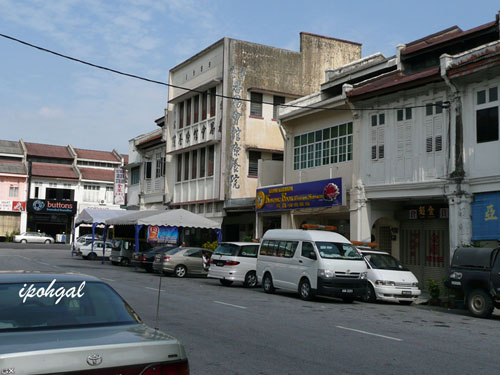 Just opposite were some funeral parlours with convalescent homes on the upper floors and of course, a few shops selling coffins.
Just opposite were some funeral parlours with convalescent homes on the upper floors and of course, a few shops selling coffins.
Further down is the iconic Rex Cinema which faces Brewster Road. In its heyday, this cinema was filled to the brim with patrons watching mainly Cantonese movies. You could find stalls selling sugar cane juice, yellow steamed peanuts, kacang putih and even plastic toys outside. Inside the cinema, there were stalls selling light snacks like sweets, chewing gum, sour plums, salted groundnuts, dried red ginger and prawn crackers.
Today, this place is occupied by a furniture shop and a car park. The stone benches in front are not there anymore. Dad and I would sit there to eat “kuaci” or melon seeds, yellow steamed peanuts and “lin toong” or seeds of the lotus plants after a movie.
Across from the cinema you will find some coffee shops, clan associations, mahjong parlors, a pet shop, an optical shop and one that makes car plates and rubber stamps. You will also find the Kinta Small Traders Association here. At the isolated end of this street is the Panglima Kinta Mosque near the Kinta River bank, the oldest in Ipoh.
Unfolding the panoramic Hume Street brought back some fond memories. When I was about 5 or 6, some nights after my eldest siblings were asleep, the owl in me would pester my dad to take me out for walks around the neighborhood. Dad called it “jalan jalan” or “sau kai” in Cantonese.
First, he took me to Jubilee Park for a ride on the musical carousel and the breathtaking giant wheel. After that, we will head straight to Hume Street for a light supper at the “luk luk” stall in front of the shop next to the coffee shop in brown paint. I usually chose a few sticks of fish balls and squid and dipped them into the boiling water. Next, I would apply some red colored sweet sauce or “tim cheong” on them before eating. Hmm, yummy, yummy!
After that, it was time to go home when we had had enough.
Many shops along Hume Street were already closed by then, so was the bus station. We quickened our steps as the place was dark and quiet. If we were out too late, Mom would scold us because she believed some malicious spirits were lurking at the corners along this street and these would make children fall sick!
Ah, if only I could turn back the clock and walk down this path again with dad holding my hands, just one more time……
http://www.ipohworld.org/?p=2131
Part 2 ~ The most extravagant journey in life…..人生最昂贵之旅程
http://www.ipohworld.org/?p=2064
Note : Special thanks to Aaron Ong who kindly took these photos and shared them with us here.
June 2010
The forgotten skillful scissors sharpener of Ipoh….
Dad has only a primary education. Without a stable job, it is difficult to feed a large family. We have already pawned whatever that can be pawned. We were close to living in poverty.
Finally, Grandma let out the front portion of #188 to a couple who turned it into a mahjong parlor. Many whores, massage ladies, bargirls, pimps, hawkers, taxi drivers and housewives came in for several rounds. It became a very noisy place, sometimes extending into the wee small hours. Many times fights broke out and the police were called in to break them up. What was once a home to us suddenly became a vice den filled with cigarette smoke and vulgar languages. Sometimes we could not even hear our own voice with all the noises around us.
We kept to ourselves, spending our time mostly upstairs but it was already filled to the brim with tenants. There is hardly any space left for us to study in. This was the last straw for Dad. In a fit, he kicked all the mahjong players out and took back the shop for us to study in peace.
In his early days, Dad was trained in a mechanical work shop in Batu Gajah before the Japanese invasion interrupted his apprenticeship.
He quickly got hold of some motor parts and assembled them into something you see in these pictures. I really do not know what to call it. There is no name for it. We simply called it “the motor”. It was this device that gave our family hopes again. More importantly, it put food on our table and saw all of us through school.
You see, with this device, Dad started another business. He cycled to all the tailor shops, hair salons and garment factories in Ipoh town, offering to sharpen their scissors. In the beginning, business was quite scarce. Nobody would trust him with their cutting tools. After all, he was just a new kid on the block in this trade.
There were some established ones in town. There is one at Cockman Street, next to the shop that sells joss sticks and paper offerings. Others operated along back alleys in the old town area, doing their business long before my Dad appeared in the picture.
However, with patience and skill, he soon won them over. Before long, they discovered that the sharpness lasts longer compared to those done by others. Moreover, Dad charged the same like the rest, RM1 for a pair. Within 2 years, he managed to build a base of regular customers.
He even painted his own signboard and put it in front of the shop every morning before he started work. I remembered it was a big scissors with a light blue background. The blades were painted in silver while the handles were in black. It was just a picture, without words.
Dad used sharpening stones or whetstones to sharpen the scissors. Some came in the shape of a small circular wheel which was fixed to the motor. Others were simply blocks of rough or smooth stones.
They were used separately or in combination, depending on the size, length and quality of the scissors. Normally the bigger, longer and superior blades were sharpened using the motor while the smaller, shorter and inferior ones were done by hand only, to prevent them from breaking.
Yes, the blades can break under intense pressure! I have seen this before and in the end, Dad has to compensate his customer with a new pair of scissors.
To sharpen a pair of scissors, Dad unscrewed the bolt and nut to separate the two blades. Dipping the scissors and sharpening stone into a pail of water to make them wet, he would slide the beveled edge on one side of each blade against the stone. He has to slide the entire length of the blade many times before the scissors is sharp enough to be oiled and screwed back.
Sometimes it took 2 or 3 hours to sharpen one and sometimes, in less than half an hour, depending on the scissors. He also sharpened kitchen knives and all kinds of cutting tools.
It was hard work. It was a one man show. With so many scissors to be sharpen and everyone wanted it done quickly, Dad has to work from morning till night, standing on his feet. He could not get the work done sitting down because, to slide the blade, he needed to use force.
Therefore, his feet would get swollen by the end of the day. His hands numbed and his back pained by the many hours of bending over the work table. Sometimes he accidentally cut his fingers and bled. With a bandaged hand, he continued with the work because he has datelines to meet and many mouths to feed.
Many customers told Dad he was the best scissors sharpener in town. They wanted him to sharpen their scissors in the quickest possible time. Of course Dad could not meet their demands because he has so many scissors waiting for him to sharpen. It is piling up by the day.
“If you wanted it to be sharpen quickly, then please go to other scissors sharpener. Here, you have to wait longer as you can see the pile of scissors and I am doing the work alone!” he could AFFORD TO SCOLD his customers. Many were fearful of him but they loved his skill.
In the end, they meekly gave in and left their cutting tools with Dad. Many bought extra scissors to use while waiting for Dad to sharpen theirs. They preferred to wait for several days rather than go elsewhere. They knew they left their tools in good hands. Throughout all the years, no customers complained about Dad’s work, except that he was rather fierce when pressured!
When I was in Std 6, some foreign tourists past by Dad’s work place which was at the back portion of the shop. They were fascinated to see such a trade done in a traditional manner and decided to video and photograph him as he goes about doing his work.
Many people in the neighborhood called Dad “Scissors Sharpener Uncle” and Mom “Scissors Sharpener Aunty”. When I took taxis in front of Rex Cinema, many taxi drivers who knew Mom and Dad even called me “Scissors Sharpener Daughter”!! LOL.
Dad toiled on until all his children finished school and were able to stand on their own. By then he was old and haggard, having slogged most of his life. As a result of working too hard, it put a toll on his health. His heart became weak, his hands stiff with arthritis and his legs from rheumatism.
Dad retired in 1996 after 25 years in this business. He spent the remaining years nursing his health and staying home resting after working hard most of his life.
This article is a tribute to Dad, a very determined man who believed in nothing and no one, except his own pair of hands and who overcame all odds that life threw into his path, without any help from anyone. I am very proud of him.
I am still keeping this motor with me as a remembrance of Dad who was once a very skillful scissors sharpener in Ipoh. It is a waste that his hand painted signboard became rusty after 25 years and he threw it away when he finally called it a day. But he gave me a pair of scissors and a few whetstones to keep as well.
My Dad Forever.
Dad, as I kept a lonely vigil beside your hospital bed
Stroking your soft white hair, caressing your fatigued face
Holding your wrinkled hands, never wanting to let you go
I could hear your pale lips murmuring my name softly
My heart bled to see your body so weak and frail
Tears rolling down as I watched you slowly fading away
And memories of us together just came rushing back
When I was just a boisterous little girl of five or six
You took me to ride on the carousel at Jubilee Park
And you cheered me on as I got onto the giant wheel
We went for white man movies together all over town
I ate peanuts on your laps in front of Rex Cinema
Rain or shine you took me to school on your old bicycle
You taught me how to read, write, draw and color
At times you and Mom ate little so that I can eat more
You toiled from day till night without a whimper
Your feet swollen from many hours of standing
Your hands numbed from working without a rest
And back ached from bending over the work table
It was like this all the years until I grew up
By then it put a severe toll on your health
When I finally blossomed into a pretty young lady
We fought over my choices of boyfriends and suitors
Even the best in my eyes is not good enough for you
They were given the boot and shown the door
At last you gave your blessing but very reluctantly
However your heart melted when you held my babies
I saw you embracing them so tenderly, so lovingly
Every morning I brew your favorite thick Chinese tea
I loved the smell of your cheroot and green color hair gel
I watched you put on your white hat and dark glasses
Humming softly your favorite tunes in the bathroom
But roaring in a thunderous voice whenever you speaks
You are a very strict disciplinarian with a heart of gold
Many people feared and avoided you but I knew better
Our endless trips to the hospital together all the years
I am exhausted from arguing with the doctors and nurses
Whether I should let you know about the prostate cancer
They said nothing can be done to stop the metastasis
That you are actually just buying time in this world
I really wanted to spare you from the painful truth
In the end I chose not to tell you, please do forgive me
When Mom suddenly left us without a word years ago
We comforted each other in those sad and lonely days
You only trusted me, and no one else, to take care of you
It is a privilege I valued and cherished very much
On this Father’s Day, I wanted to let you know again
That I am very grateful and proud to be your daughter
I loved you with all my heart and I still missed you badly
Note: Dad in his vintage dark glasses. Can you spot his white cowboy hat? He was flanked by my two kids whom he adored. Later, Dad passed on from pneumonia when the cancer metastasized to his lung. He was 87.
Happy Father’s Day to all the guys who played a part in bringing us into the world, then slogged to bring us up and finally released us to spread our wings!
“HAPPY FATHER’S DAY” 父亲,我爱您!祝父亲节快乐.
The day the curtain came down for Nam Foong Coffee Shop.
Sometimes life can be cruel.
It was late 1969. Dad has a younger brother staying with us at #188. He was a carpenter at a furniture shop in Ipoh. A young man of just 23, he was healthy and full of life vitality. Everyone liked him. He was steady with a pretty girl next door and they dreamed of a happy life together. In fact, they were busy planning for their big day.
One night, looking into a mirror while combing his hair and getting ready for a date with his sweet heart, he saw a small lump on his neck, the size of a 5 cent coin.
Thinking it was an insect bite, he just applied some cream onto it and left it to heal by itself. But it did not, instead it got bigger by the day. Before long, it ballooned to the size of an adult’s fist. It was a malign tumor.
Dad was very worried for him. Being the eldest brother, he felt it was his duty to send him for treatments and was prepared to bear the costs. Treatments were sought for him in Ipoh and Kuala Lumpur at private and government hospitals but to no avail.
In Singapore, doctors there advised Dad to send his brother for treatments in Canton, China. Overseas treatments are expensive but Dad did not mind paying to save a young life.
At first, he got better and stayed on for a year there for further treatments. But the tumor recurred and in the end, he passed on, after several unsuccessful operations. A wedding it was not to be but a funeral instead for this unlucky young man.
A few months later, paternal grandpa, a heavy smoker, was diagnosed with lung cancer. Again, as the eldest son, Dad did what is necessary for him but grandpa also lost the battle. The old man was given a proper last rite and burial. By then, Dad was almost broke to the bones.
Before he can even recover, along came a notice from the Ipoh municipality. Three conditions must be met before business license can be renewed again.
Firstly, operators of all eateries must tile the walls of their shops to 6 feet high. As the bucket system will be phased out in a few months time, all toilets must be converted to the flush system. Lastly, the whole shop must be repainted with white paint.
Dad simply cannot afford it anymore. Most of his savings were spent to treat his loved ones.
He went to see the shop owner, hoping to get some help. The shop owner stressed that he only let out an empty shop and will not bear any renovations done to it. It was clearly stated in the tenancy agreement and he was unmoved by Dad’s predicament. To add salt to injury, the rental was raise too. It has been a long time since the last raise, he pointed out.
As fate would have it, even the faithful stone grinder failed him too. After 25 years of heavy usage, the handle, made from hard wood, broke down. In fact, the whole thing, from wear and tear, is out of shape. It is time to order a new one from China. This will also cost a lot, especially the transportation’s fee.
Dad was at his wit’s end. No license. No tools. Rental has gone up.
Finally, he threw in the towel. The curtain came down on Nam Foong Coffee Shop in 1971, after 26 years of operation.
Our carefree childhood days abruptly came to an end when Dad lost his livelihood. What followed were the bleakest days of our lives. There were 8 hungry mouths to feed. We lived from hand to mouth for the next 2 or 3 years.
We did not celebrate Chinese New Year simply because we cannot afford to. It was just like any normal day for us.
No reunion dinner. No new clothes.
I still remembered how on the night of New Year’s Eve in 1971, Dad went out to buy 2 packets of fish ball noodles and asked Mom to divide it out among the children. Each of us would get a small portion it hardly filled up our hungry stomachs. That night, we all went to sleep early.
We could hear the fireworks outside welcoming the New Year and the children in the neighborhood running up and down merrily, playing firecrackers after their reunion dinner.
Her eyes red, Mom told us softly, “Go to sleep. Once you are asleep, you will forget you are hungry.”
I still remembered these words till this day.
Back in the 1970s, many people held their wedding banquets in Perak Ku Kong Chow Association at Jalan Yang Kalsom. Mom went there to work as a cleaner after the dinner has ended, to earn a few dollars. She would bring home some left- over food for us.
Succulent prawns, crispy fried chickens and tasty mushrooms which some people cannot take in anymore, we gulped these down hungrily. Sometimes, we could find some toothpicks and used tissue papers inside the gravy.
Despite the hardships, Dad held the family together and reminded us to study hard. He said, no matter what, we still have to go to school and learn. He believed, with a pair of strong hands, we will not be hungry again.
Note:
My late uncle was standing 3rd from left at the back row.
The couple in the middle, back row, were my parents while my grandpa was seated in the middle, front row.
The original photo has been framed up and hung on the wall.
福如东海,寿比南山 Happy Birthday Dear Grandpa!
My paternal grandpa’s name is Yip Soo. He was a very skillful bean curd maker from Guangdong, China. He was the man behind the famous tau foo far at Nam Foong Coffee Shop.
This picture was taken in 1966 in his house in Batu Gajah on his 70th birthday celebration. He was flanked by his two wives (the eldest partly hidden by my brothers) as my mom helped me to serve him tea. I was only 2 at that time.
For this auspicious occasion, Grandpa received from his children, a set of suit, a pair of shoes and a cap, all made from expensive silk material in the traditional style. These items are called ‘sau 寿’which sounds like longevity in Cantonese. To give him ‘sau 寿’means to give him longevity, so it makes sense! All these items were kept away to be used when he died. But you won’t find this practice anymore.
Being the youngest among his brood of grandchildren, I was the apple of his eye. He used to shower plenty of hugs and kisses on me. I still remember how he loved to carry me around on his lean shoulder or put me on his lap. He liked to bring me over to the provision shop and let me choose whatever sweets or biscuits that I fancied.
During school holidays, all the grandchildren staying in Ipoh would visit Grandpa. Paternal grandma would charter an old taxi, a Mercedes, to ferry us to Batu Gajah. We would be packed like sardines into the taxi, all ten of us with grandma in tow! Poor rickety taxi!
Grandpa welcomed us and treated us like VIPs. He would spoil us rotten. He was a good chef and would cook up a few delicious dishes to serve us. He also liked to give us money to buy snacks at the provision shop opposite his house. We would spend like there is no tomorrow! Ice creams, lollipops, prawn crackers……
These are the memories I can remember him by. I was only 6 when he passed away in 1970 from lung cancer as he was a heavy smoker. I still remember the grand funeral ceremony and there were about 20 stocky pallbearers carrying his big and heavy coffin. He was buried with much fanfare on top of a hill in Batu Gajah. The plot of land is big and so is his cemetery. Big things for a small man !!!
May 2010
” Tau Foo Far ” from Nam Foong Coffee Shop 南风茶室之豆腐花 – A taste from the past
Bush Radio Marble Table Wooden Chairs
Besides being a home to my family, 188 Hugh Low Street was also once a coffee shop.
In 1945, an English man who was working and staying in Batu Gajah, retired and planned to return to England for good. He has a collection of marble tables and wooden chairs in his rented house. Unable to bring them along, he gave them away to the villagers nearby.
Dad got some tables and chairs and hired a small lorry to transport them to his newly rented shop in Ipoh. He bought a Bush Radio from a second hand dealer a few years later. Two hanging fans and fluorescent lamps were added to complete the ‘old world charm’ look. And voila, Nam Foong Coffee Shop “南风茶室” was born!
Nam Foong is famous for its tau foo far, served with essence of almond in a small porcelain bowl. They are served either warm or chilled. It was sold at 5 cents a bowl in the 40s and 30 cents during the 60s.
It was hard work to make tau foo far. First, soya beans were soaked before being placed in between 2 round stone slabs to grind them. It is then cooked in a big wok using slow fire. Once it is boiled, it is filtered and poured into wooden tubs. Roasted lime stone powder is added to give it the right texture. Finally, they were scooped into hundreds of porcelain bowls.
Dad could take the easy way out by cooking gula Melaka or rock sugar to go with tau foo far, like what you are getting nowadays. But he will have none of this. To him, tau foo far is best eaten with essence of almond and nothing can convince him to think otherwise!
To produce the aromatic and sweet essence of almond call for skill. They were steamed and pounded to extract the essence which if done incorrectly, will give a bitter taste instead.
In those days, everything was done by hands. No machine is use, unlike now. The work was done by my parents and paternal grandma from night till dawn when everyone was sound asleep.
And do you know that the outcome is not the same every day? Dad was very strict with the end result. He will not settle for anything less. If he was satisfied with the texture, he will sell them. Otherwise, he would just pour them away and for that day, he will sell the normal stuff like coffee or toasted bread only.
The best soya beans came from Indonesia and Vietnam. Different batch of beans from the same source yield different results. The secret lay in choosing the right beans and using the right amount of each ingredient. It was a skill he learned from paternal grandpa who is very skillful in making soya bean products.
Soon words spread around about the smooth and aromatic tau foo far . Before long, it sold very well and on a good day, almost 200 bowls were sold. Patrons would park their cars near the shop to have a taste of this delicious dessert because back then, Dad would not allow take away in plastic bags. He insisted the tau foo far to be served in porcelain bowls to bring out the best in taste, aroma and texture.
A myriad of customers came in for this dessert. My elder brother’s headmaster, who is a Christian brother at Sam Tet School, occasionally cycled over for a few bowls in the hot afternoon. He came in his white robes and all!
Then there is the old blind masseur who roamed the town offering his service. When he called it a night, he would drop in for a bowl or two. Whenever I saw him coming, I would quickly ran and squatted under tables or hid behind doors because the sight of him wearing big dark glasses with bells in his hands simply petrified me. I was about 5 or 6 then.
The policemen from the police station opposite would come for the tau foo far too. Some of them would ask Dad, “Eh, towkay, apa benda ini hah…….sungguh sedap?”
Dad would reply, “ Ini tau foo far !”
“Apa….oh….tau foo farrrrrrrrr…..” and everyone would laugh.
Business was stable and the family could make a decent living.
However, some 25 years later, one day, Dad received a notice from the Ipoh municipality which changed our lives completely……
Note: The photos above showed a marble table, some wooden chairs and the old radio from Nam Foong Coffee Shop. Except for the radio which was broken down, the rest are still in use till today. During its prime, we can listen to stations all over the world, just imagine that!
A Perak State Flower?
This interesting proposal came from Perak Tourist Association.
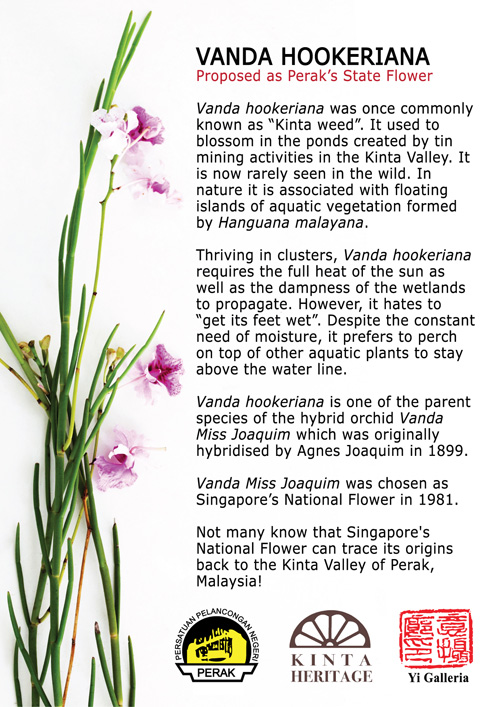
天长地久 ……Forever and ever…….
“To have and to hold from this day forward, for better for worse, for richer for poorer, in sickness and in health, to love and to cherish, till death do us part.”
After the Japanese left Malaya in 1945, Dad had wanted to resume with his apprenticeship at the village workshop in Batu Gajah but found it was burnt down. The owner and his entire family were killed by the Japanese soldiers.
He was already 25. So the next step would be to move to Ipoh to start a new life. With RM300 in his pocket, he rented a place and started a coffee shop with his mother and sisters. That was how Nam Foong Coffee Shop at 188 Hugh Low Street began.
As time went by, business began to pick up and he needed an extra pair of hands. It was also time he needed a companion too. So he was looking for two persons rolled in one.
At the same time, Mom was hoping to escape from childhood poverty and a nagging stepmother. She was a young girl of 15 staying in Kampung Kuchai.
Through a match maker, photos were exchanged and a meeting arranged for them. And it turned out to be love at first sight for them both. Months later, they were engaged.
During their courtship they like to stroll along Hugh Low Bridge, People’s Park and Birch Bridge in the evenings. Sometimes they would go to cinema halls to watch a movie or two and to Jubilee Park for amusement. They often took a ride around town in a rickshaw because Dad could not afford to buy a car.
Mom and Dad eventually got married on November 22 1950 immediately after she reached the age of 20. It was a modest wedding attended by family and friends from both sides. A wedding luncheon was held at the Nam Hoi Wui Khun (Nam Hoi Association) along Clare Street.
Like any couples, they had their fair share of quarrels and fights but nothing could rock their strong and solid union. Despite everything, they stayed glued together to weather out all the hardships and obstacles that came their way in raising a large family.
In April 2000, Mom was diagnosed with end stage kidney failure. Dad was very devastated. He just broke down and cried. It was almost like his whole world collapsed on him. Knowing her end was very near, he helped me to take loving and tender care of her although he was already 80 and frail.
Mom succumbed to a heart attack on 24 November 2000 at home with Dad and me by her side. It was only 2 days after their 50th golden wedding anniversary which they could not celebrate due to her illness. Dad was beyond consolation. He had lost a partner of 50 years and the greatest love of his life. A loss so profound he could not recover from, even after many years.
When he passed on later, after 7 lonely years, their ashes were finally placed side by side at the Paradise Memorial Park in Tanjung Rambutan.
天长地久 ……Forever and ever……..
* HAPPY MOTHER’S DAY 母亲节快乐 http://www.ipohworld.org/?p=1585
* At the doorstep of hell….well,almost. http://www.ipohworld.org/?p=1489
HAPPY MOTHER’S DAY 母亲节快乐
A TRIBUTE TO MOM 献给天下间的母亲
Dearest Mom, how can I ever forget
the simple joy of nestling in your loving arms
and suckling contently at your milky breasts
that gave me the nourishments of life.
Dearest Mom, how can I ever describe
your kind smile that I saw through my tears
as I took a fall and you whispered to my ears
that it is sometimes alright to take a tumble in life.
Dearest Mom, how can I ever thank you enough
for the wisdom that you taught me as I grew up
and the love you gave me so unconditionally
which is the sweetest nectar I have tasted in life.
The lovely lady in this photo is my beloved late mom, Madam Chow Chiew Sai. This photo was taken in 1945 for match making purpose. It was taken at an unknown studio in Ipoh, most probably near Kg Kuchai where she stayed during her younger days. In those days, match making was the norm upon reaching marriageable age.
In this photo she sported the “abalone” hairstyle made famous by the popular mainland Chinese songstress, Zhou Xuen周璇. Mom was a big fan, always humming her songs as she goes about doing her chores. For this photo session, she also sewed herself a set of samfoo to complete the pretty look. Needless to say, she won my dad’s heart straight away!
From cradle to grave, Mom never had it easy. Her own mother died when she was only six and being the eldest child, she had to take care of her siblings and doing all the house work even though she is still a child herself. And in those days there were no electricity or tap water, much less gas stove! So she has to draw water from the well and chop fire woods as a child.
After marriage, she had to face abusive in- laws and in old age debilitating illness.But Mom is a very resilient and gentle person. She has never throw a tantrum nor even rise her voice. Despite the many hardships, she and Dad managed to give my siblings and me a decent childhood and for that we are forever indebted and grateful to them both.
This coming Sunday is Mother’s Day. Even though she is no longer with me but she is always in my heart and in my mind. And I like to take this opportunity to thank her and also to wish her a Happy Mother’s Day and may she rest in eternal peace.
Of course, I also like to wish all the wonderful moms in the world a HAPPY MOTHER’S DAY. Mothers are our guardian angels. As the Jewish proverb puts it aptly “God cannot be everywhere, therefore he created mothers.”
April 2010
WHEN THE CIRCUS COMES BECKONING……….
In 1929 my dad was just a young lad of 9, staying in the little tin mining town of Batu Gajah. According to him, cinemas and televisions were unheard of then. Chinese operas (called tuk tuk chiang in Cantonese) were popular instead, especially during festivals, mostly held near the Kuan Ti Temple ground, near the Kinta River that flows along some small towns in Perak.But opera is heavy stuff, too boring for a kid of 9.
He preferred circus. Watching the trapeze swinging from bar to bar, the clowns with their funny antics and animals like elephants or tigers performing stunts kept him mesmerized. These circuses travel from town to town, performing to large crowds of young and old in huge tents.
So when he heard that a circus is coming to town, he was very excited and determined not to be left out. Having gathered a few equally enthusiastic boys, they cycled from their village to town to watch the circus.
The problem is, none have enough money in their pockets to buy a ticket each. But this does not deter them from having a jolly good time, because boys will always be boys!
Upon reaching the circus ground, dad began to hatch a devilish plan and whispered it into their ears. All understood and nodded approvingly. Halfway into the performance, these mischievous boys sprang into action.
One of them gathered some pebbles from the ground in his fist and creeping quietly from behind, threw them at the old fat guard sitting near the entrance of the tent. He was rudely awoken from his little nap.
Infuriated, the poor fellow gave chase and while the entrance was left unmanned, the rest of the boys would make a quick dash into the tent and assimilate into the crowd. The boy who threw pebbles would run off and disappear into the bushes, leaving the poor guard panting and swearing.
The same tactic is used the next night and the next. All the boys took turns to throw pebbles at the poor fellow while the rest ran inside and watched the circus without having to pay!
Some 70 years later as dad puts his little grandchildren on his lap and watches the circus together on TV, he would recall his juvenile folly and burst into a toothless laughter, tears streaming down his wrinkled cheeks.
Note: Sorry, I do not have a photo for this post. As a little boy from a poor family, dad could not afford to buy a ticket, let alone own a camera to capture what he saw at the circus.
At the doorstep of hell….well,almost.
As I was growing up, dad used to tell me about the Japanese atrocities. In his twilight years, while I was taking care of him, he told them to me all over again.
When the Japanese came to Malaya in December 1941, dad was just a young man of 21, staying in Kampung Merantin, Batu Gajah, Perak. He was an apprentice in a workshop but war changed everything.
The British had retreated and the locals were left to defend themselves against the aggressors. The men folk kept vigil at home while the women hid in the nearby jungle to escape from being rape by the soldiers.
One night, the Japanese came to his village and those nearby. Using loud hailers, they commanded all the young men in the villages to come out or else risk being shot at. These young men were then round up and marched to a field in nearby Changkat. They were made to stay there until dawn.
Early the next morning, they are told that some of them will be chosen and sent to help build the Burma Siam Railway at the Burmese border.
A Japanese soldier sat at the desk, handing out pieces of white papers to the young men. In these papers were written the word ‘Go’ while some were just blank. They were given out alternatively. Those who receive the paper with the word ‘Go’ were made to queue in a row ready to be on their way. Those who received the blank papers were to be sent back to their respective villages.
When it came to his turn to come forward to collect his paper, dad became very anxious and worried about his fate. He hesitated and paused for a moment. In a flash, a Japanese soldier was pointing his rifle at dad and the guy behind was barking furiously at him to hasten up. He even pushed dad violently forward.
Confused, dad quickly stepped aside and said,” If you are so impatient, why not you go first?”
Without a word, this guy just shoved dad aside and surged forward to collect his paper and his face turned pale. He got the paper with the word ‘Go’ which was actually meant for dad. And as for dad, he got the blank paper which was meant for that impatient guy.
Many of his friends went and as far as he knew, none came back. Some died from starvation or disease while many were tortured to death. Dad managed to earn another 66 years of life, succumbing to a bout of pneumonia at the age of 87 on 24th April 2007.
This piece is specially dedicated to my beloved dad,Yip Hee, may he rest in peace in Nirvana.
March 2010
We’re on Facebook, as well
In an effort to reach more readers, ipohWorld is now on Facebook. Do become a fan and invite your friends as well. More interesting contents and discussions will be uploaded soon. Stay tuned!
February 2010
January 2010
December 2009
November 2009
Tilley Oil Lamp
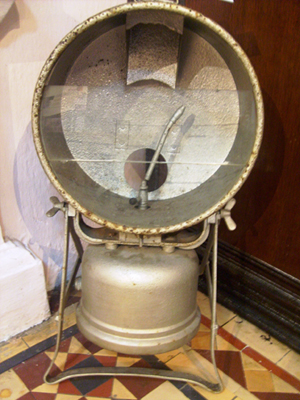 Known as the Tilley F L 6 Floodlight Projector, this kerosene lamp was used in underground mining in the New Lahat Mine Sdn Bhd during the 20th century. One wonders how did the miners use the lamp, since it looks bigger and heavier, compared to some other oil lamps.
Known as the Tilley F L 6 Floodlight Projector, this kerosene lamp was used in underground mining in the New Lahat Mine Sdn Bhd during the 20th century. One wonders how did the miners use the lamp, since it looks bigger and heavier, compared to some other oil lamps.
This type of lamp dates from before the last war and had many uses apart from mining as it was a very powerful floodlight. It was used, for example, by the army to search for low flying aircraft as well as general floodlighting for disasters where it could floodlight a large area or send a beam for up to pne quarter of a mile. We also believe that in the height of the tin production it was also used in open-cast mines to allow the coolies to work through the night.
You can visit the Perak Museum in Ipoh to view this artifact.
October 2009
Croc, the Menace
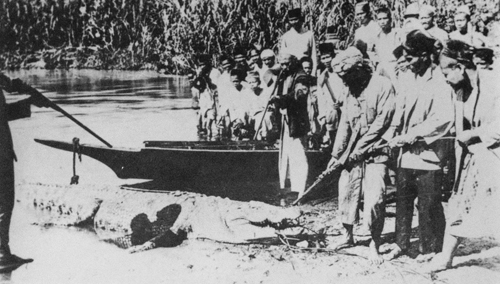 This photo shows a crocodile that was shot in the Kinta River which runs through Ipoh Town. The hunter was an European (referring to the hunter’s attire ) who helped the villagers to put an end to this crocodile’s menace. And the villagers were so excited to see the dead gigantic croc. We will be happy to hear from you, if you have information regarding this picture.
This photo shows a crocodile that was shot in the Kinta River which runs through Ipoh Town. The hunter was an European (referring to the hunter’s attire ) who helped the villagers to put an end to this crocodile’s menace. And the villagers were so excited to see the dead gigantic croc. We will be happy to hear from you, if you have information regarding this picture.
The Curse of Ipoh Town
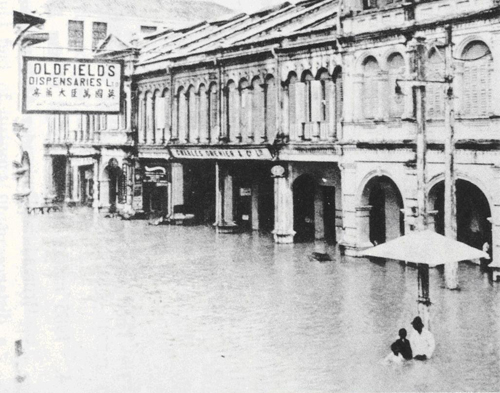 This picture shows one of the worst floods that ever happened in Ipoh. It was in 1926 and the picture was taken at the corner of Belfield Street and Station Road.
This picture shows one of the worst floods that ever happened in Ipoh. It was in 1926 and the picture was taken at the corner of Belfield Street and Station Road.
The precautions against such a disaster was taken earlier than this date. Around 1914-1921, the Ipoh Flood Mitigation Scheme had been carried out to protect the town from the then regular flooding. The aims of the scheme were to eliminate the sharp bends in the Kinta’s course through Ipoh Town; to divert waters of Sungei Choh into Sungei Pinji, instead of flowing directly into the Kinta above Ipoh. But the scheme wasn’t good enough to prevent the flood from continually trying to destroy Ipoh.
Thankfully further more effective measures were taken and we no longer suffer the curse of Ipoh Town.
Perak’s Own Leaning Tower
This photograph taken in 1920 shows little sign of the famous Teluk Anson (now Teluk Intan) tower actually leaning, but if you go there yourself I can assure you it leans!
Manufactured from bricks and wood and standing at 25.5 metres tall, its Pagoda-style construction gives the tower an appearance of having 8 different levels (like Pisa). However, the building is actually divided only into 3 storeys each 16½ feet high, connected by 110 stairs. Above the third storey stands the water tank (for it was actually a water tower for the surrounding population) 16 feet deep and with a surface area of 680 square feet. All 8 levels have a 6 feet wide balcony and a decorative 2 feet high marble wall surrounding the main structure. Roofing tiles complete the picture. One amusing fact, taken from the very limited history available is that the side balconies were designed “to ensure the safety of the tower’s caretaker from rainstorm”. There is still a regular caretaker of the tower today and one of his duties is to wind the old clock that was originally ordered from London and still keeps good time while chiming every 15 minutes. Again the records claim “the hourly ringing of the Tower’s clock could be heard up to 8 miles away, but now the chimes could be heard as far as one to half a mile in radius due to the modernization of buildings and all means of transportations”. Today I doubt that it can be heard much further than the town center.
Over the years the tower has been a Japanese observation post and a Boy Scout Headquarters amongst other roles, but in 1997 the council decided that the tower should remain a landmark for the town’s tourism and constructed the new town square around it. Not long ago it was subjected to careful internal restoration.
Next time you are going to Pangkor, Lumut or even Penang (if you are coming from the South), why not take that detour off the highway at Bidor and enjoy Malaysia’s own leaning tower and while in Bidor, just stop at Pun Chun, the first large Chinese restaurant on the right past the traffic lights and enjoy the best duck noodle soup in the country. They have been serving it for more than 3 generations and you will love it.
September 2009
Charles Alma Baker
This magnificent house, now demolished, was once owned by Charles Alma Baker. This house, originally with a thatched or atap roof, was probably built in 1890 or 1900. Charles Alma Baker was suryevor, miner and planter from New Zealand who came to Batu Gajah during in late 1890s. William Kellie Smith helped him, in his survey work for Kinta Land Office and in road making in South Perak. Moreover, he joined venture with William Kellie Smith to clean 360 hectars of forest in Perak. He was considered as one of the pioneers who contributed to the developments of Batu Gajah.
Alma Baker was born in Otago, New Zealand and came to Perak in 1890. Initially, he was contracted to do survey works for the Perak government before the contract was terminated in 1897 after the accuracy of his surveys forced an inquiry into his activities. His most lucrative mining concession at Gunung Lanno financed his involvement in rubber plantations.
The Straits Trading Company And Its Contributions.
Before 1890s, all mining operations in Kinta were financed by people in Penang, who advanced the tin-miners money with which to pay their coolies and smelt their ore. In return, the advancers were paid by the consignments of smelted tin-ore. But in 1890, a new development took place which entirely changed the system. In 1889, Mr. Muhlinghaus, a tin smelter from Singapore, set up the Straits Trading Company in Ipoh and several branches of it in Kinta, undertaking to buy the tin-ore direct and unsmelted from the tin miners in exchange for ready cash.
The initiative of Mr. Muhlinghaus brought immediate benefit to local producers, who were earlier depended on creditors to carry on their businesses. Moreover, the establishment of Straits Trading Company also solved the smelting problem of local towkays. In Kinta, the tin miners had been using ‘semut’ smelting furnace for years. This kind of furnace could only operate by using charcoal from valuable timbers. In 1888, the government had prohibited the use of ‘semut’ smelting furnace, as the government wanted to export the timbers. The problem of smelting without using the timbers gone as the Strait Trading Company ready to take the unsmelted tin-ore. The establishment of Strait Trading Company had contributed on growth of tin mining in Kinta and Ipoh itself.
Sybil GM
This is a picture of Ipoh’s famous Eurasian lady, Sybil Kathigasu who was awarded the George Medal by King George VI. Her story under the Japanese Occupation is a harrowing one, yet one of bravery strength and determination. Her story and that of her family can be found at here.
A Shooting Team
The shooting team was in 1959 at Ipoh. Mr. Richard Clarke, from 11th Independent Field Squadron Royal Engineers is the second from the left front row. Mr. Richard Clarke has told us more about this photo and his time in Malaya during the Emergency. His story can be found here.
Rickshaws Galore in Old Ipoh Town
This Photograph of Station Road, Ipoh is a classic with so many rickshaws busy in the street. It is 1906 and this is the very centre of Perak’s commercial operations.
It was here that companies like Chung Thye Pin Built his status building which was first Dr Connolly’s Medical Hall, then Oldfield’s and subsequently Georgetown Dispensary,
The Straits Trading Company the very centre of the Tin trade were here as well, as were, The Chartered Bank (The Chartered Bank of India, Australia and China), The Mercantile Bank, Whiteaway and Laidlaw, the leading department store in Ipoh, Charles Grenier & Co Ltd, who originally imported British Made ‘Centaur’ pedal cycles. They also ran a small press as ‘Printers Stationers and Publishers’ with its head office here, with branches in Kuala Lumpur and Seremban, The Station Hotel, (as the railway station at that time was a single storey wood and atap building with no accommodation facilities.)
This indeed was THE place to have your head office.
Old Town Woes
What can be said about this picture other than how can an owner allow his property to deteriorate to such a level as seen here. In a world where it is said that investing in property is one of the safest things to do with your money, it would be normal to maintain that investment. However it appears that Ipoh, which has many buildings in this state, does not follow the normal pattern, preferring to spend nothing on the building in the hope that the land value will rise sufficiently to recoup those profits from investing in it.
Incidentally this picture was taken in Old Town. So much for maintaining our heritage.
Dead Men Tell No Tales – or Do They?
This is Taiping resident – Lee Eng Kew, better known locally as Ah Kew, freelance writer and field historian who explores temples and grave yards to archive epitaphs, trace lineage and record oral history. For over ten years, this man in the street has carried out extensive research on the illustrious history of Taiping, a town of many firsts in Perak, Malaysia – focusing on the Chinese immigration and contributions to the town and state.
Not content with that, in 2004 he made a video about his hobby in which he was the narrator Lee Eng Kew, assisted by Producer Khoo Eng Yow, Director of Photography, Lim Chun Piao and Lam Yek Wah, Sound, Lee Wei Ching & Sylvia Lim and Editor, Khoo Eng Yow.
Such was its success it was selected for Jonio International Film Festival, Italy, the IV International Audiovisual Festival, Azerbaijan and the 2nd Golden Apricot Film Festival.
Search Google – “Ah Kew the digger”, to find out more.
August 2009
Yau Tet Shin’s New Town Under Construction 1908
The picture shows Ipoh New Town extending from the Kinta River in 1908. It was built on the padi fields of Datoh Panglima Kinta and as the new buildings were erected from the river towards Gopeng Road, block by block, replacing a number of extremely smelly pigsties.
The builder was Yau Tet Shin, miner, property owner and friend of E W Birch (The Resident of Perak). Wong Kap Soot, Yau Tet Shin’s long time business manager and member of the Ipoh Sanitary Board supported him in the endeavour.
The Ipoh New Town consisted of some 350 houses, with a new market, a mandarin school and theatre all included as anchor attractions. New Town mirrored the Old Town across the Kinta River, but on a well laid-out plan with fine, broad streets coupling with the main thoroughfares of Brewster Road and Hugh Low Street all the way to Gopeng Road and Tambun Road.
Humber Pulman
The picture of Humber Pulman was taken in Taiping during 1950s. It was a Standard Vanguard for Officers of the Command, who used having arrived by helicopter to travel around the area. Besides that, several armoured Scout Cars also used to escort the Humber Pulman during the visits.
Such a beauty! Dont you agree? Please drop by if you know about this car, registration 27BC24.
Captain Speedy’s Banglo at Larut
This photograph of what is said to be Captain Speedy’s Bungalow was taken when the building was under restoration a few years ago. Does anyone know what it is used for now, assuming the renovation is finished?
Captain Speedy was born in Meerut, India, in 1836 and named Tristam Charles Swayer Speedy. He was appointed as the Superintendent of Police of Penang in 1871 before becoming the Perak Chief of Police in 1873, the year when he was tasked with quelling the war between two Chinese Triads who were fighting over who had the rights over the tin mines.
A c1875 picture of the bungalow may be found here.
Panglima Street – A Trunk Road?
The picture shows the Panglima Street, Ipoh around 1904. It was named after Datoh Panglima Kinta who originally owned the land that Ipoh is built on. In Perak, the elephants could be seen on the streets as they were used as a main carrier for both people and goods, particularly in the tin mines. Perak was the main exporter of the elephants to other Malay states in Malaya then.
Hugh Low Street, Ipoh 1887
Hugh Low Street taken from rise, near the Registar of Motor Vehicles office in 1887. The first bus service was started from this street and Laxamana Road to Gopeng in 1910. The pioneer was Yeop Abdul Rani Idris who used a single bus to run his business. However, in 1912, the business collapsed due to economic factors.
July 2009
Centre Of Attraction
The 11th Independent Field Squadron Royal Engineers was building a bridge in a kampung, in 1958, as one of their Malayan Emergency operations in Taiping. The villagers were looking on curiously, wondering what was going on.
Nothing has changed in 50 years – Malaysians still love to watch what is happening, particularly road traffic accidents of which we have far too many.
Taiping, 1958
The picture shows an old , open cast, tin mine in Taiping during 1958. We are wondering what had happened to this mine. Can you help us ?
The scene is of course very typical of an abandoned mine with the mine itself now full of water and the sheds falling down. However the Palong still stands proud against the skyline.
Sungai Siput Memorial Board: Is it o’K’ to have ‘T’ea?
Two memorial boards can be seen at the entrance of Elphil Estate and Sungai Siput Estate (which was formerly known as Phin Soon Estate) with the details of the tragic murders on 16 June 1948. A good intention.
But it’s so sad to see the board at the Elphil Estate. The name of the planter, Mr. A.E Walker was mispelled as A.E Walter. It seems that the person who was in charge of putting up the board, didn’t care much about the history which led to the Malayan Emergency.With this major error, definitely will mislead the readers in future about what actual had happened especially the person who was murdered.
Centre Point, God’s Little Acre
If we go to God’s Little Acre, Batu Gajah, definitely we won’t miss out to see a tall monument called ‘Centre Point’. The ‘Centre Point’ was erected in 17th June 1989 by the Perak Planters’ Association and other well wishers, to honour the planters, the miners, the Malayan Police Force, the Commonwealth Forces and the general public who gave their lives during the Malayan Emergency, 1948-1960. It was first used at the 10th Remembrance Day Ceremony. Every year, it becomes the main venue on which the wreath-laying ceremony is focussed.
LOCAL GOVERNMENT OF IPOH
The local government system was introduced into Malaya before the end of the 19th century, after the system showed a tremendous development in United Kingdom. In United Kingdom, the Elizabethan Poor Law of 1601 become the initial step towards the local government establistment. This law required the local community to look into the problems of protection, health, drainage and other important issues that were needed to form a good township. And it was the first move by a central government to grant delegated authority to a local body.
The local government at Ipoh was established in March 1893, when the Ipoh Sanitary Board was formed. The Ipoh Sanitary Board was set up by Frank Swettenham, the British Resident during his visit to the district at the beginning of the year. At this time, the population in Ipoh reached up to 11,000 as reported by Leech, the District Magistrate. The Ipoh Sanitary Board, a council, comprising officials and unofficials, was responsible for cleanliness and hygiene of the town. It was the first of its kind in Kinta Valley, although there was a similar board in Taiping earlier. The success of the Ipoh Sanitary Board led to the formation of similar bodies in Gopeng and Batu Gajah in 1894. From 1893-1897, it covered a huge area of Lahat, Menglembu and Ipoh itself. In 1897, it was replaced by the Kinta Sanitary Board. The biggest achievement by the board, was the installation of a gigantic septic tank in 1905, which was the first of its kind in Malaya. Besides that, the board also succeeded in taking effective measures to secure proper ventilation of houses, adequate backlanes spaces between buildings, and the removal of unsafe and unhealthy dwellings throughout the Kinta District.
However, in 1905, the Board was split up into two; Kinta Sanitary Board North in Ipoh and Kinta Sanitary Board South in Batu Gajah. It happened when Kinta Sanitary Board which was responsible for all the townships in Kinta District didn’t show much of a statisfactory improvement after its formation. But after 10 years, the both bodies were joined back together, due to economic turmoil, and it lasted till 1941. On 1st January 1956, Ipoh became a financially autonomous local authority, which means that the local authority can no longer expect any financial assistance from the state government, with a few exception.
As Ipoh becoming a big town, the degree of elected representation increased. In 1961, there were 18 elected councillors, compared to only 11 representatives in 1894. From the day of formation till 1956, the chairman’s post was given only to British origin senior staff. But in 1957, for the first time ever in Ipoh local government history, a Malay man, Enche Abdullah B. Udi elected as the Chairman of Ipoh Town Council (as it was called then). On 31st May 1962, Ipoh became a municipality, a title and recognition given by His Highness, the Sultan of Perak. ‘Till now, the Municipality of Ipoh is still bringing in various developments to Ipoh, making her one of the well developed towns in the country.
June 2009
A Day in the life of a Dulang Washer
“Perseverance is the key to success”. This is the motto that drives the poor dulang washer on the performance of her work. It is obvious to the meanest intellect that a dulang washer does not live a life of ease and luxury. She earns barely enough to feed herself and her family and her life is a hard one. Yet, she persists in her work because she hopes that one day she might succeed.
A dulang washer has neither tin-mines nor labourers to work for her. She obtains tin-ore from the rivers where anyone can help themselves to the alluvial tin-ore, though of course she has to obtain a licence first before she can begin to extract any alluvial tin from any river.
Very early in the morning, she busies herself around her shabby hut. She prepares a scanty meal for her still sleeping children and, having eaten a hurried breakfast of hot Chinese tea and some home-made cakes, she walks to work. Her husband has also gone to work for he works as a rubber tapper and has to be up early too. On her shoulders she carries a pole with a basket containing a big bowl of rice, a large bottle of weak Chinese tea and some vegetables on one side. Hanging on the other end, is a big, smooth-surfaced wooden dish called a “dulang”, a wide-brimmed hat made of rattan and an old wooden bucket, which is bound up tightly with rattan to prevent leakage. Around her neck she wears a faded red scarf. On her feet, she wears a pair of dirty old sandals which have been mended over and over again.
When she has walked a little distance away from her home, the sun rises and beats down upon her. Because she is afraid that the hot rays will tan her or give her sun-stroke, she hurriedly ties the scarf over her head and then places the wide-brimmed hat carefully over it. By the time she reaches the river, the sun is already shining very brightly and would have given her sun-stroke had it not been for the protection of the scarf and the hat. Thanks to the long sleeves she wears, her arms are not exposed to the sun.
She finds a cool place on the bank of the river and sits down to rest before starting work. A drink of the weak Chinese tea refreshes her. She would have made it stronger if she could have afforded to buy more Chinese tea leaves.
Taking the bucket and dulang, she walks to the edge of the river. There, she rolls up her trousers high above her knees and wades to the middle of it. She bends down and scoops up some tin-bearing soil from the river bed into the dulang. She holds the dulang a little below the level of the water and rotates it. The swirling water carries away the light soft soil and the heavy grains of tin-ore settle at the bottom of the dulang. She then empties the grains of tin-ore into the bucket. It takes much washing to obtain a handful of tin-ore and the poor woman’s work is tiring and tedious.
By noon, her bucket is only a quarter filled. She leaves her work and wades back to the bank for some lunch. On dry land, she inspects her legs and sees several leeches hanging on to them and sucking her blood. She is so immune to this sight that she calmly plucks them off and throws them away. She washes and dries her legs and then applies some Chinese ointment to the bites. She sits in a shady place and begins her hurried lunch. After working so long in the water, she enjoys the meal though the rice and vegetables are cold. She leaves some for the evening because she will not get home until about seven o’clock in the evening.
There is no rest after lunch for she returns to work immediately. Regardless of the passing time she works on. Even the beautiful reflection of the setting sun and the purple clouds in the water does not distract her. Only when darkness falls, does she return to the bank, eat the remaining food and pack to leave. She rolls down her trousers again and starts to walk wearily home.
She trudges to the town and sells her tin-ore to a tin-smelter. He weighs her tin-ore and calculates the amount of money that must be paid to her. Meanwhile, she helps herself to a warm cup of tea from the man’s tea-pot and rests her weary bones on a wicker chair. The man gives her the money and reluctantly she leaves the comfortable chair to start on the journey home.
When she returns to her simple and shabby abode, she again does not have the liberty to rest for she now has to prepare dinner for the family, with the help of her eldest daughter. The younger children wait impatiently for their dinner and while the tired dulang washer is preparing the long-awaited dinner, her youngest child watches, a seraphic look of innocence on his pale and wan face.
After dinner, she sends her children to sleep and then has the usual talk about their future with her husband. They both add some of the money they earn to their hidden ‘store’ which they sometimes count happily.
So, after a hard day’s work, she lies down on her wooden bed and stays awake for some time, thinking how wonderful it would be to be rich. But, exhaustion soon puts her to sleep.
This is a typical day for a poor dulang washer. Though her work is difficult and tiring, she never thinks about giving up her only means of income to take up some work that is beyond her knowledge.
Miss Yvonne Chew,
Lower Six Arts 1952
St. Michael’s Institution
The story above is extracted from The Michaelian 1952, an annual magazine by St. Michael’s Institution Ipoh.
We Shall Remember Them
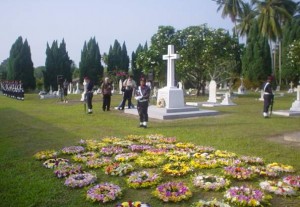
On the second Saturday in June, every year a truly multi-racial, multi ethnic and multi- religious group gather at Changkat Batu Gajah to join in remembering all those that were killed in the Malayan Emergency from 1948 to 1960. This is a unique occasion attended by people of all ages from as far afield as Australia, Fiji, India, New Zealand and UK, as well as those closer to home from Penang, Kuala Lumpur and beyond.
The simple ceremony begins at 7.30 am on 13 June 2009 in the Holy Trinity Church, on the site where there has been a church since 1891, but the main event is the laying of wreaths at the central point of the old Christian cemetery, known world-wide as “God’s Little Acre”, where 116 Planters, Police Officers, Miners and Civilians, killed in the Emergency are buried. The ceremony however remembers all those killed by the Communists whatever race, creed or religion and wherever they may lay.
Here a ceremonial guard is mounted by the Royal Malaysian Police, while their buglers sound “The Last Post. After a short set of speeches, Ghurka Pipers from Brunei play “The Lament” while long-retired and serving Police Officers and Military Men from home and overseas, together with Planters, Miners and the descendants of those killed in the conflict, lay wreaths to pay their respect to the fallen heroes. The wreath laying is usually led by the representative of the Chief Police Officer, Perak, Chairman of the Malaysian Palm Oil Association, High Commissioners and other dignitaries.
Behind this simple and meaningful ceremony is the hard-working Committee of the Malaysian Palm Oil Association (Perak) who stage the ceremony every year. Should you need more information, they can be contacted at 05 254 9582.
We hope to see you there!
December 2008
Welcome to ipohWorld’s Heritage Trail
Welcome to ipohworld’s first blog.
This is your site to share information and photographs of Perak’s heritage and social history for recording in an online database archive, currently being produced for worldwide access via the web in 2009. Donors will be credited if they wish, but please remember that the laws of copyright apply in Malaysia and that anything that breaks those laws cannot be used. You should therefore state that you have a right to publish the photographs or information (if you have).
Currently we have more than 2600 entries with images on the archive , but there is plenty of room for more. Our subjects covered are almost any aspect of ‘past Perak’, but particularly targeting the Kinta Valley. We have stories of the Towkays, the cinemas, mining, rubber, food, hawkers, the Japanese, the communists, the Emergency, Orang Asli – even Rose Chan – and more, so don’t hang back, we need your help.
Our objective is to record every fact we can for use by students, researchers and most important our young people of today and tomorrow so that they will understand what made our State tick over the past 150 years. No subject is too insignificant to be considered for use.
However, this blog is not only about collecting data, but it is also for you to express your opinion on any matter pertaining to local history and heritage in Perak.
So let’s hear from you; What do you think about the state of our heritage in Perak. Is heritage important? Can it make us any money? What can we do to preserve our heritage? etc. etc. We need your thoughts on this blog now, so sit down and write. Just do it, you know it makes sense!




